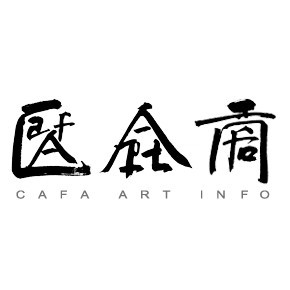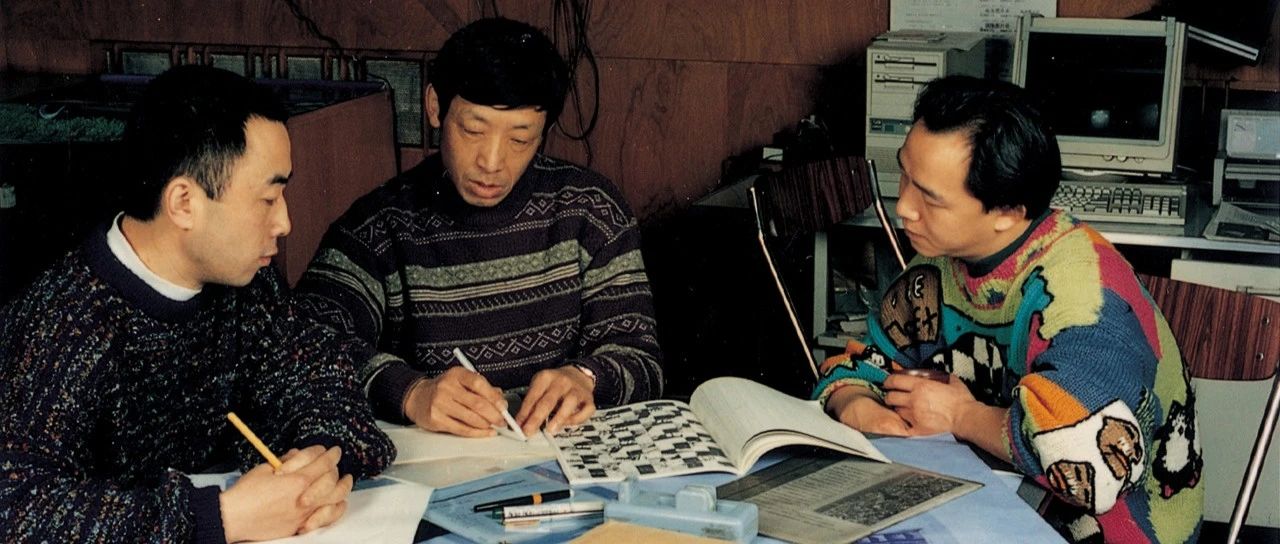- 0
- 0
- 0
分享
- Wu Yi: A Talent for Painting (PART I)
-
原创 2022-03-02
Editor’s note:
Over the past two decades, Wu Yi has been conducting his creation as a way of “wandering”. He always roams the streets and alleyways in various cities quietly and alone, experiencing the scenery of the world, and recording his thoughts during travels with paintings and words both breezily and frankly. Then he would always like to present an entire act of art creation through a publication and an exhibition.
Wu Yi’s art is deeply inspired by the notion of “External Learning from Nature and Back to One’s Internal Comprehension” (CN. 外师造化, 中得心源) as proposed by Zhang Zao from the Tang Dynasty, which makes his work step from nature and end up within his inner heart. In Wu Yi’s paintings, the viewers can observe specific objects and scenes, however, the subjective expressions of images by the artist are always touching.
The “Prague” is a series of paintings that Wu Yi created with local people and sceneries in Prague seven or eight years ago. Since the pandemic in 2020, he picked up these “unfinished” sketches and mentally returned to this mysterious city. At the end of 2021, the author conducted a long interview with Wu Yi. In this interview, we started the conversation with the brand-new series of “Prague”. Furthermore, the creative methodologies and experience of Wu Yi, the contemporary value of the painting, the teaching strategies in CAFA, as well as the artist’s talent regarding painting, were also discussed in-depth, which touches on a dramatically core issue in the creation of a painting.
👇 点击下方链接跳转中文版文章,英文版将分两篇先后推送。
📍 The interview is divided into four parts, which respectively discuss Wu Yi’s experience in Prague and his creative methods, the eternal value and aesthetics of painting, learning from tradition, and the artist’s talent. Part I will conclude the first two sections, featuring Wu Yi’s personal creative experience.
Interviewee: Wu Yi, Artist, Professor and the Director of the 4th Studio of the Department of Mural Painting at CAFA
Interview conducted and edited by Zhu Li, Editor-in-Chief (CN) of CAFA ART INFO (Q)
Text Sorting and Translated by Emily Weimeng Zhou/CAFA ART INFO
Edited (EN) by Sue/CAFA ART INFO
01
“I painted the real people in life there.”
Q
The “Prague” series was started in 2013, and many of them were painted in Prague. Why did this series restart in 2020 and 2021? The contents and scenes you painted were still based on what you saw in Prague from 2013 to 2014. What were your considerations when creating this?
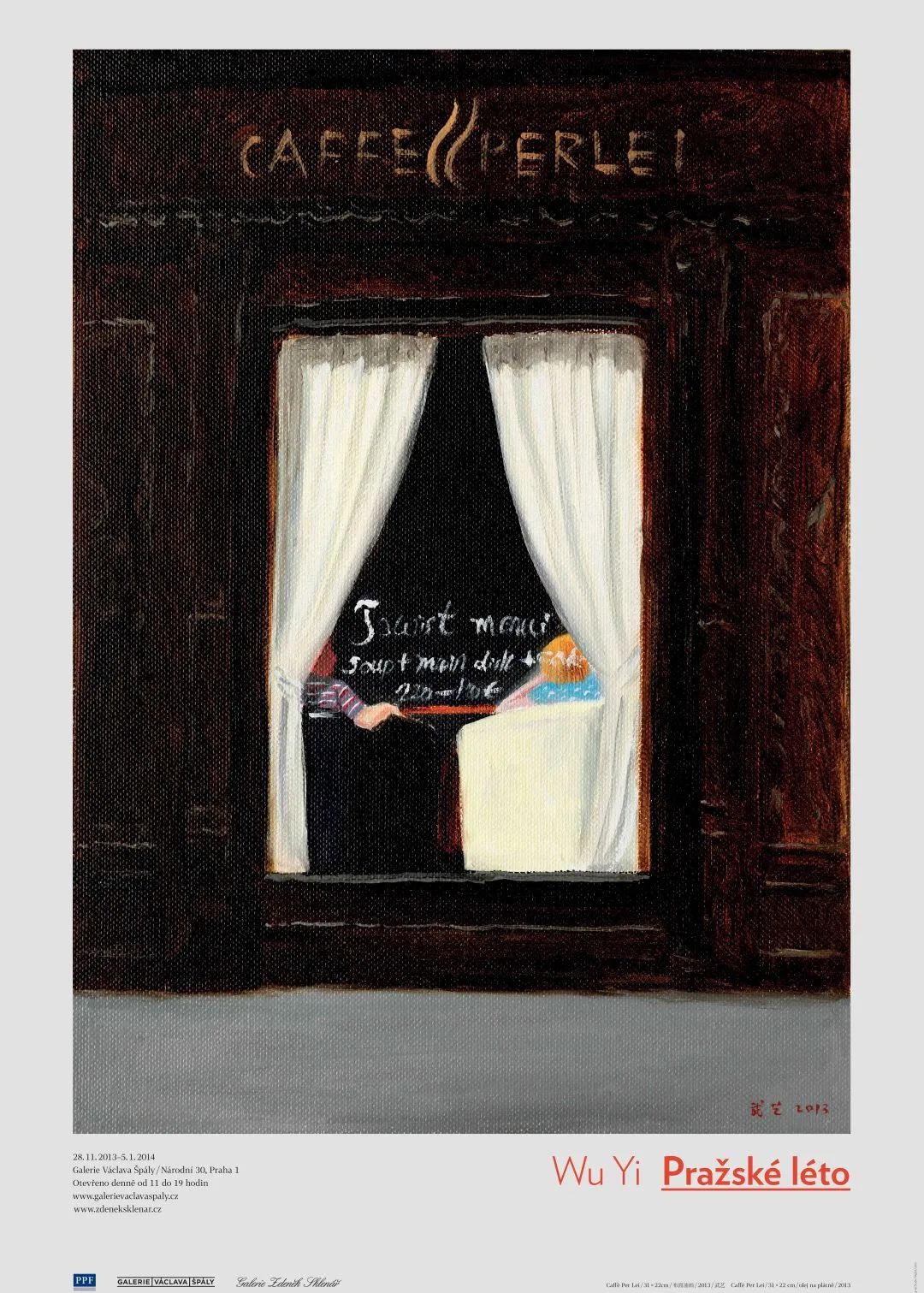
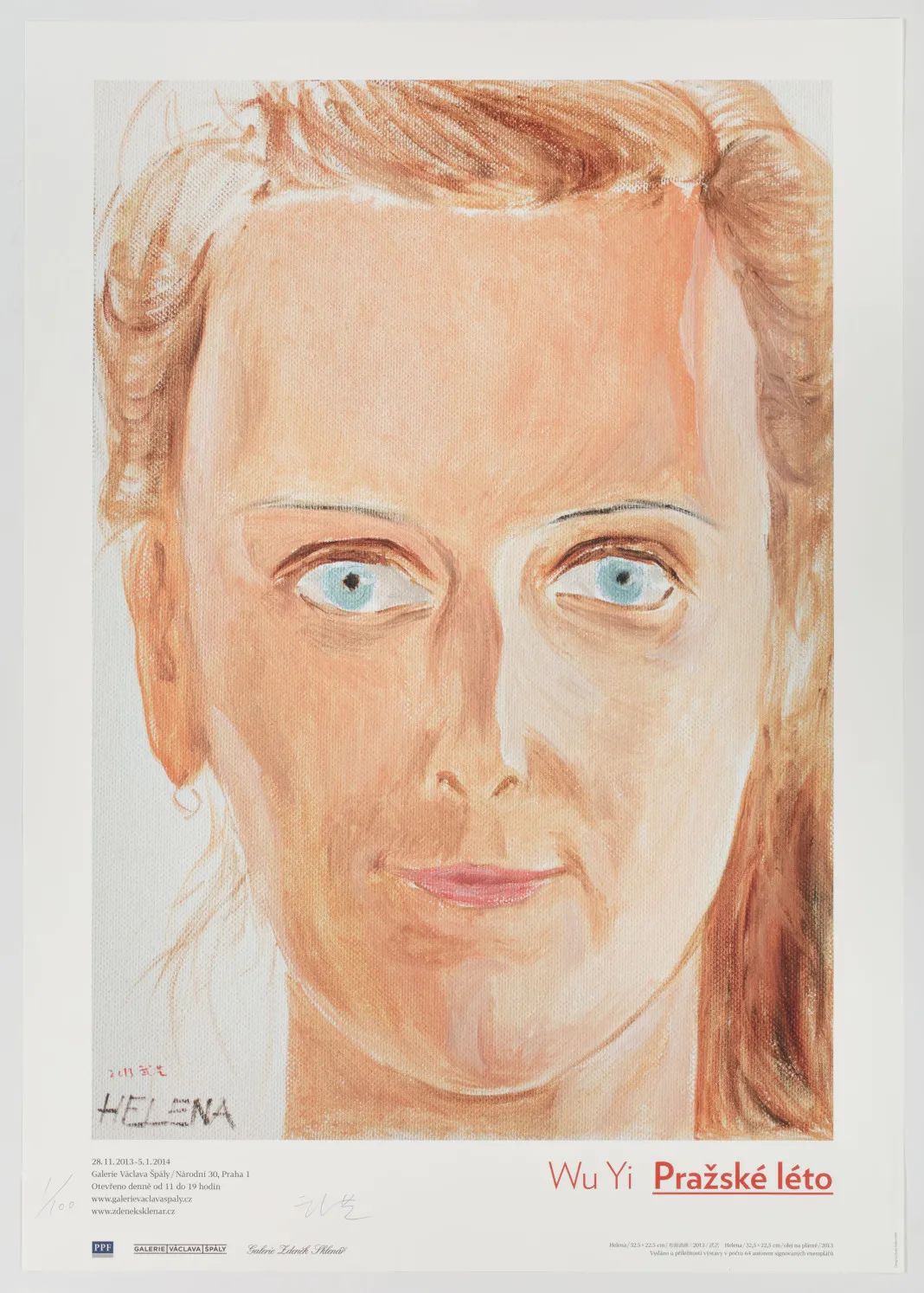

Posters of "Prague Summer", Galerle Vaclava Spaly, 2013
Wu Yi: From 2013 to 2015, I created the “Prague” series over three years, which considers a whole plan including creations, exhibitions and publications. This is the first series of creations that I have considered to complete exhibitions and publications in Prague after finishing the paintings. Also, it is also the only time I have completed such a creative act on a foreign land. I frequently say that there are four indispensable processes in the creation, namely, the production of works, the exhibition of works, the publication of works, and the collection of works. Basically, the “Prague" series completes the content of these four sections, and this is the first time I have created art in this way.
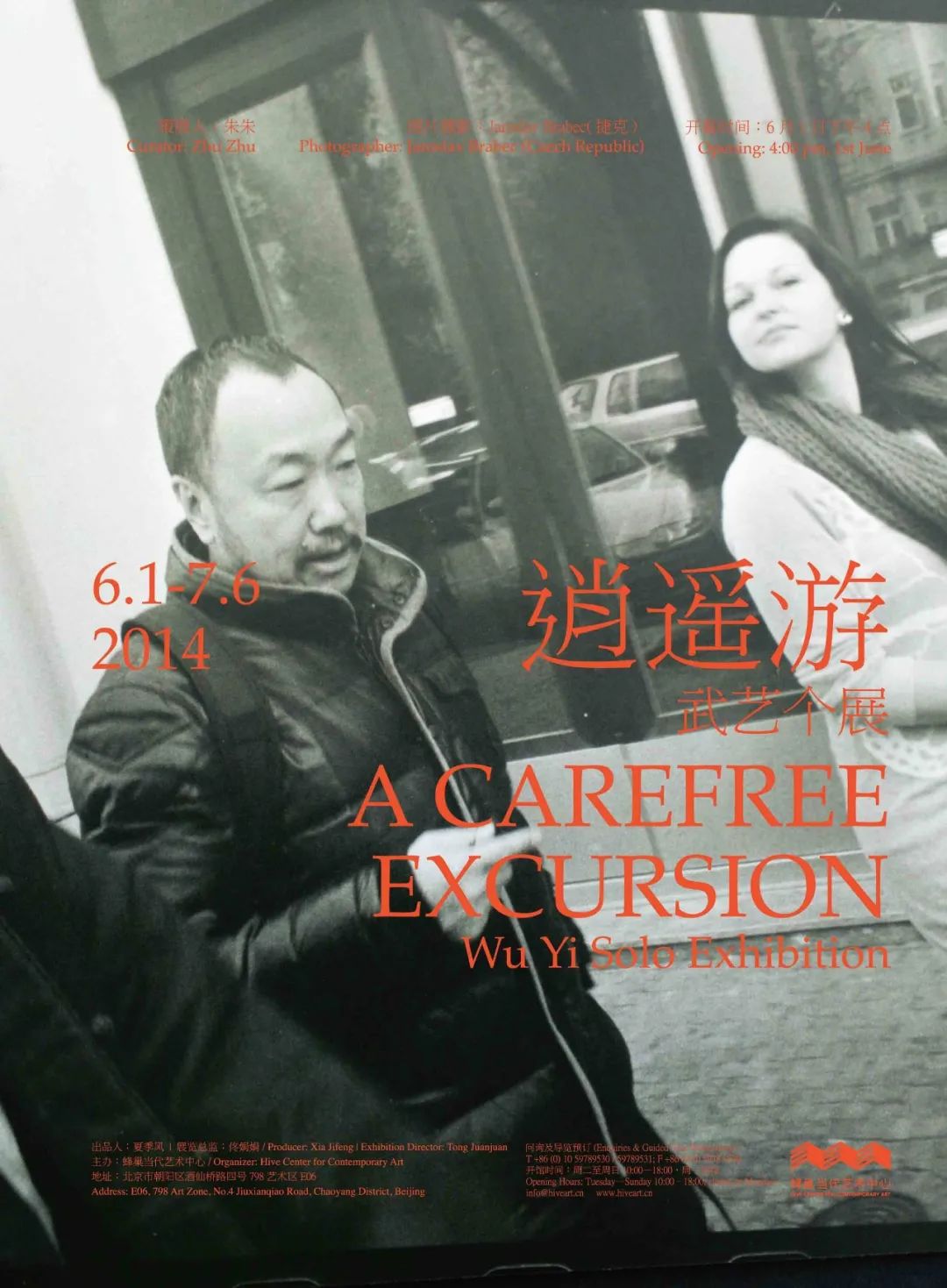
"A Carefree Excursion— Wu Yi’s Solo Exhibition", HIVE CENTER FOR CONTEMPORARY ART, 2014
There was a lot of unfinished stuff regarding the “Prague” series at that time. During the period that the pandemic pervaded the city, a state of being “unfinished” always remained in my mind. The isolated situation allowed me to reopen the original sketches, and a desire for expression was cultivated. Rather than an on-site feeling, painting Prague at this time was based on memories and imagination, which produced both unfamiliar and fresh experiences and allowed me to examine the original images and sketches in a more rational way. I firmly believe that besides the on-site feelings at a relatively primary stage, art creation needs to be sublimated by exploring a higher level of expression. In the long run, this is the relationship between art noumenon and nature, something that is both blended with nature and higher than nature. Personally, I don't think staying at the level of directly depicting the object is enough; instead, sublimation is inevitable.
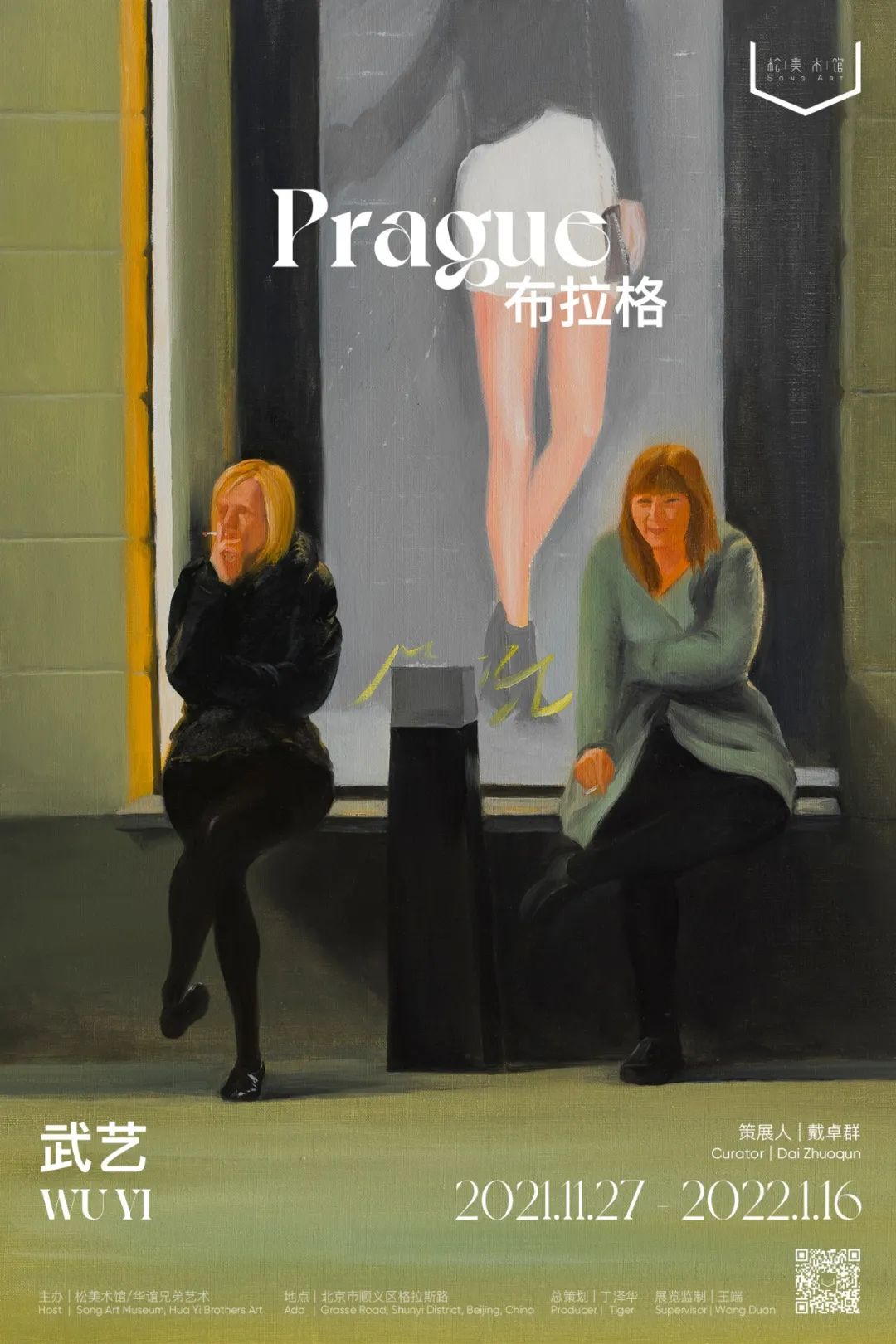
“Prague—Wu Yi”, Song Art Museum, 2021
In fact, I paint Western paintings in a Chinese way of thinking—“External Learning from Nature and Back to One’s Internal Comprehension”. It is a standard proposed and practiced by our predecessors, which emphasizes returning to the inner heart. The objects presented must be figurative rather than obscure. This is another reflection of drawing Prague in Beijing.
Q
Do you have any further plans to explore other series of previous work?
Wu Yi: Probably. Many things are in a state of reincarnation, and distance often produces another sense of beauty. Sometimes reality is a form of beauty, apart from the intuitive feeling that nature brings to you, the space of imagination and memories, and even a sense of mystery and the unknown might be the most interesting part of art. We Chinese often see things in a “concrete” way but lack the part of “nihility”. My experience of painting Prague in Beijing actually brought me to a state of “the integration of reality and nihility”. Your hint just now is very crucial. Maybe the results of each part of my previous travels will be re-presented later, and I will explore them deeper. When I went to Prague to sketch, I was already in a creative state, which may be due to the figure painting. I suddenly realized that only the “Prague” series was all about figure paintings.
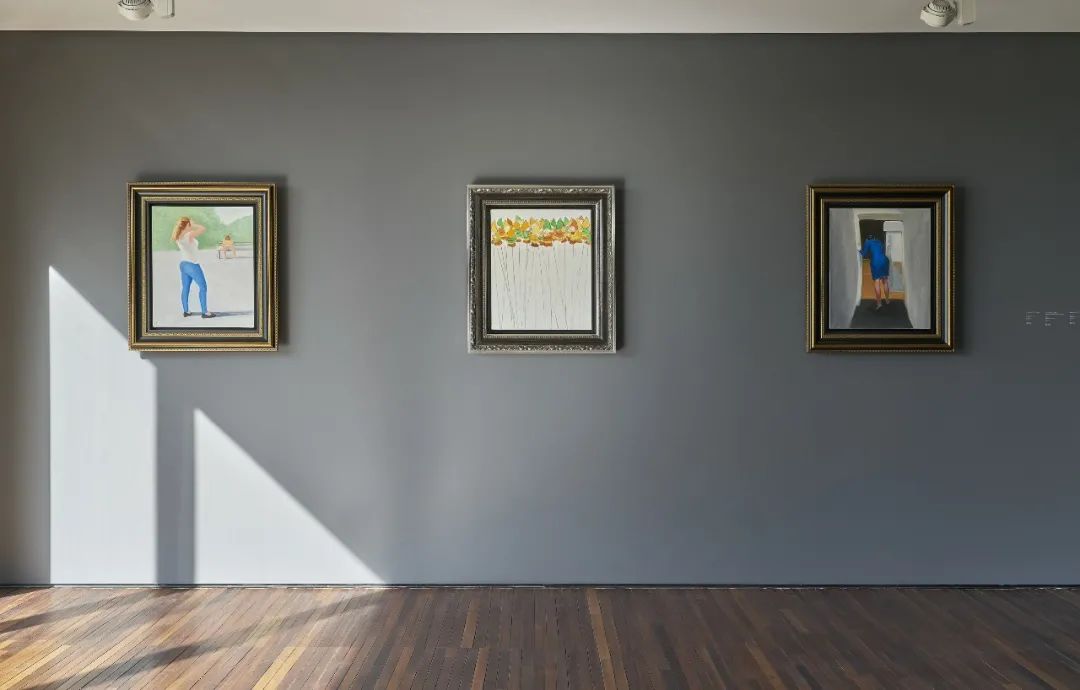
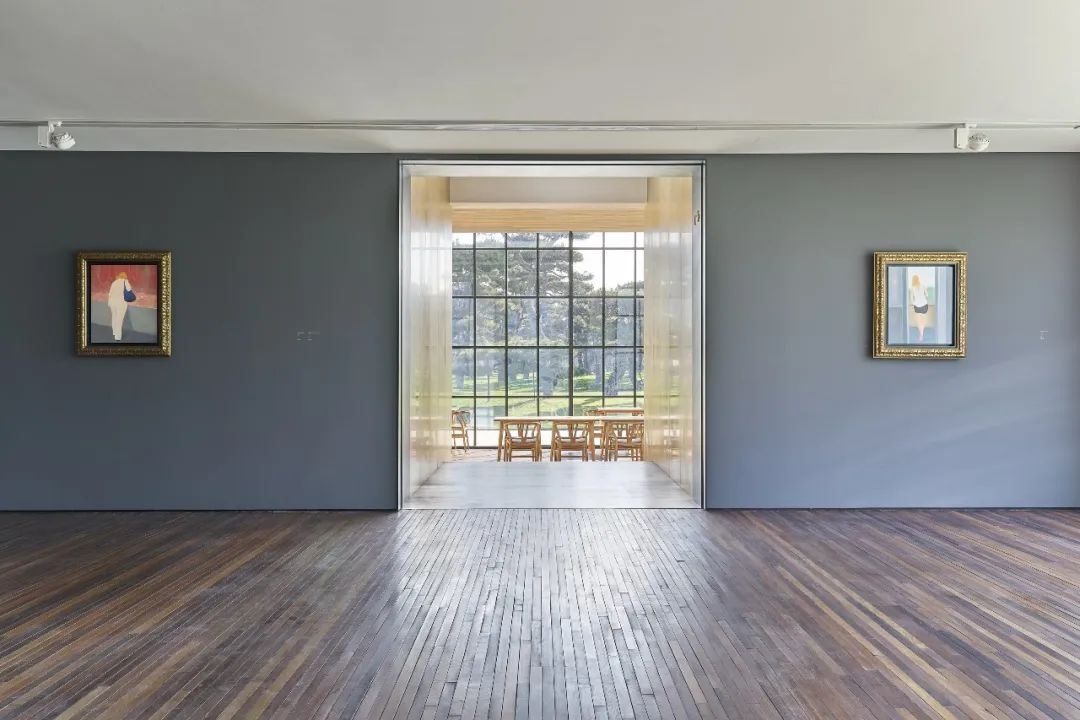
Exhibition View of “Prague—Wu Yi”, Song Art Museum, 2021
Q
Exactly. This is what I want to ask. Why is the “Prague” series all about painting people? Previously, in Kyoto, for example, you painted everyday buildings and scenes without anyone.
Wu Yi: When I was in Kyoto, I just suddenly wanted to get rid of people and words.
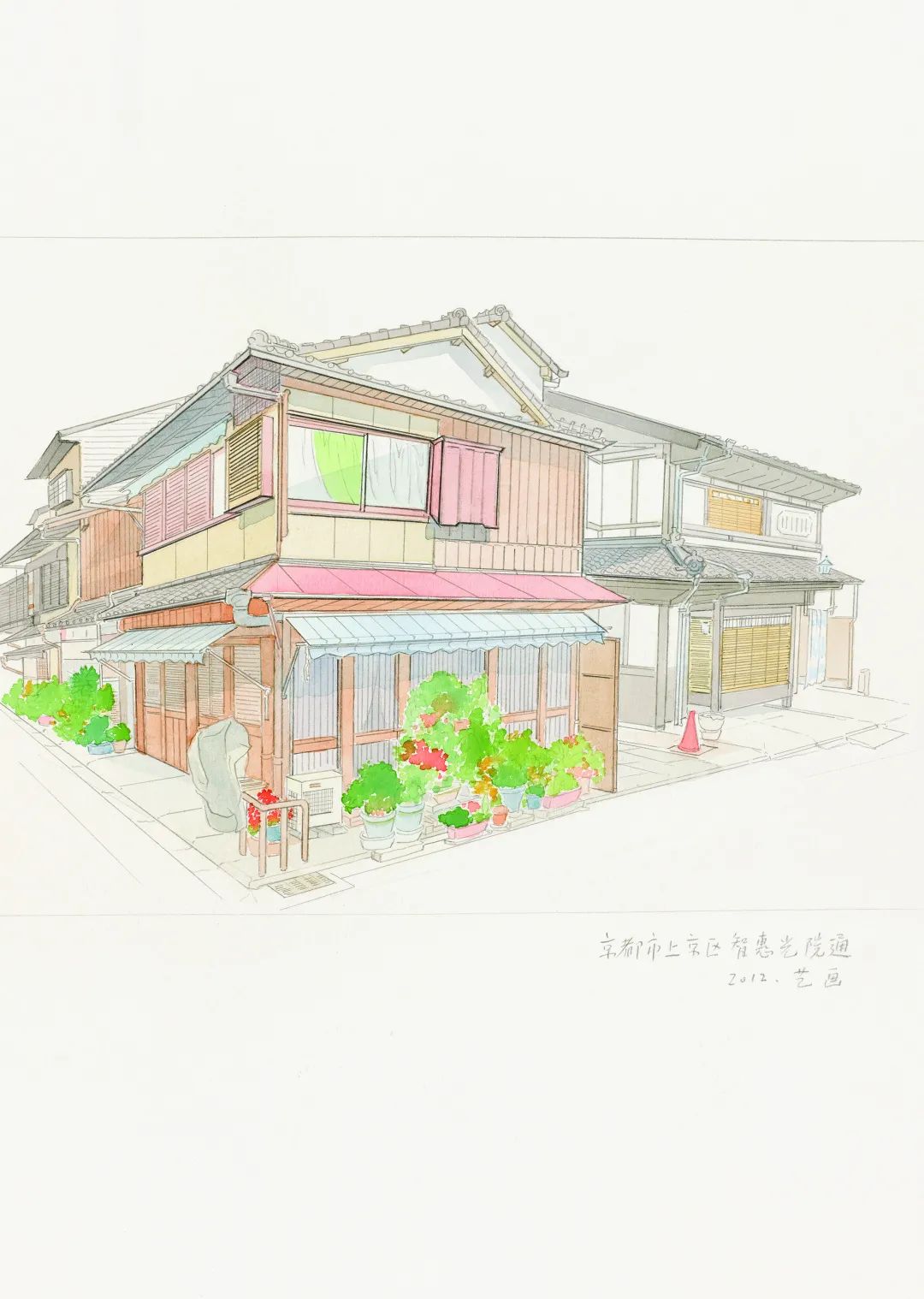
Chie Koin-dori, Kamigyo Ward, Kyoto, 39cm×27cm, Ink and color on paper, 2012
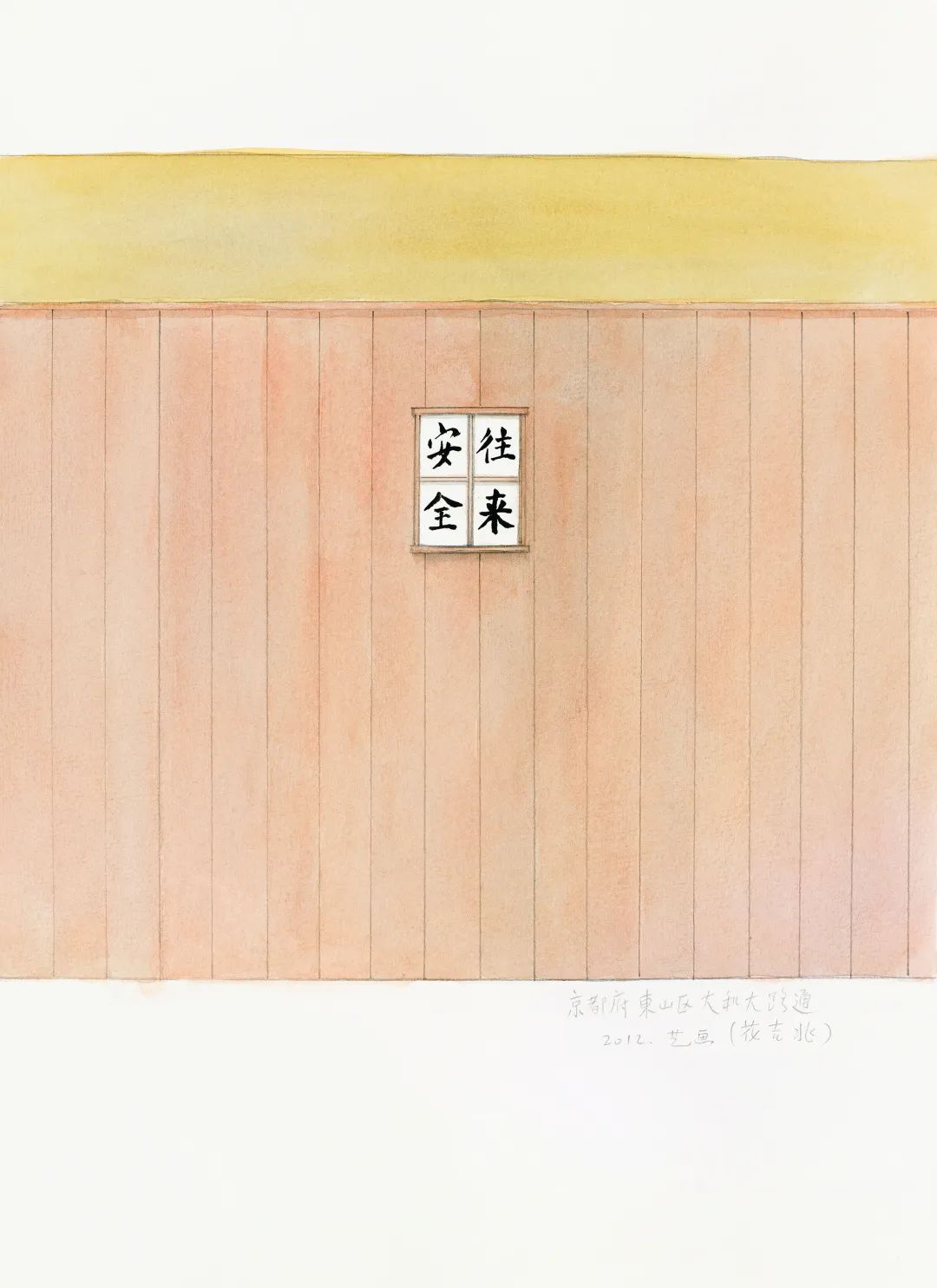
Yamatooji-Dori, Higashiyama Ward, Kyoto, 39cm×27cm, Ink and color on paper, 2012
This is my intuition. After I arrived in Kyoto, I found that the relationship between nature and things transcends the relationship between nature and people. While the people of Prague, especially the women of Prague, touched me to a great extent. They are not professional models but people I meet in daily life. It is also a first experience of this kind for me. For so many years, we have painted professional models in CAFA—we could find non-professional models for the creation, but personally, I have never painted models outside the academy. The West provides a different environment from China. I suddenly feel that people are precious, and I can use paintings to express living people.
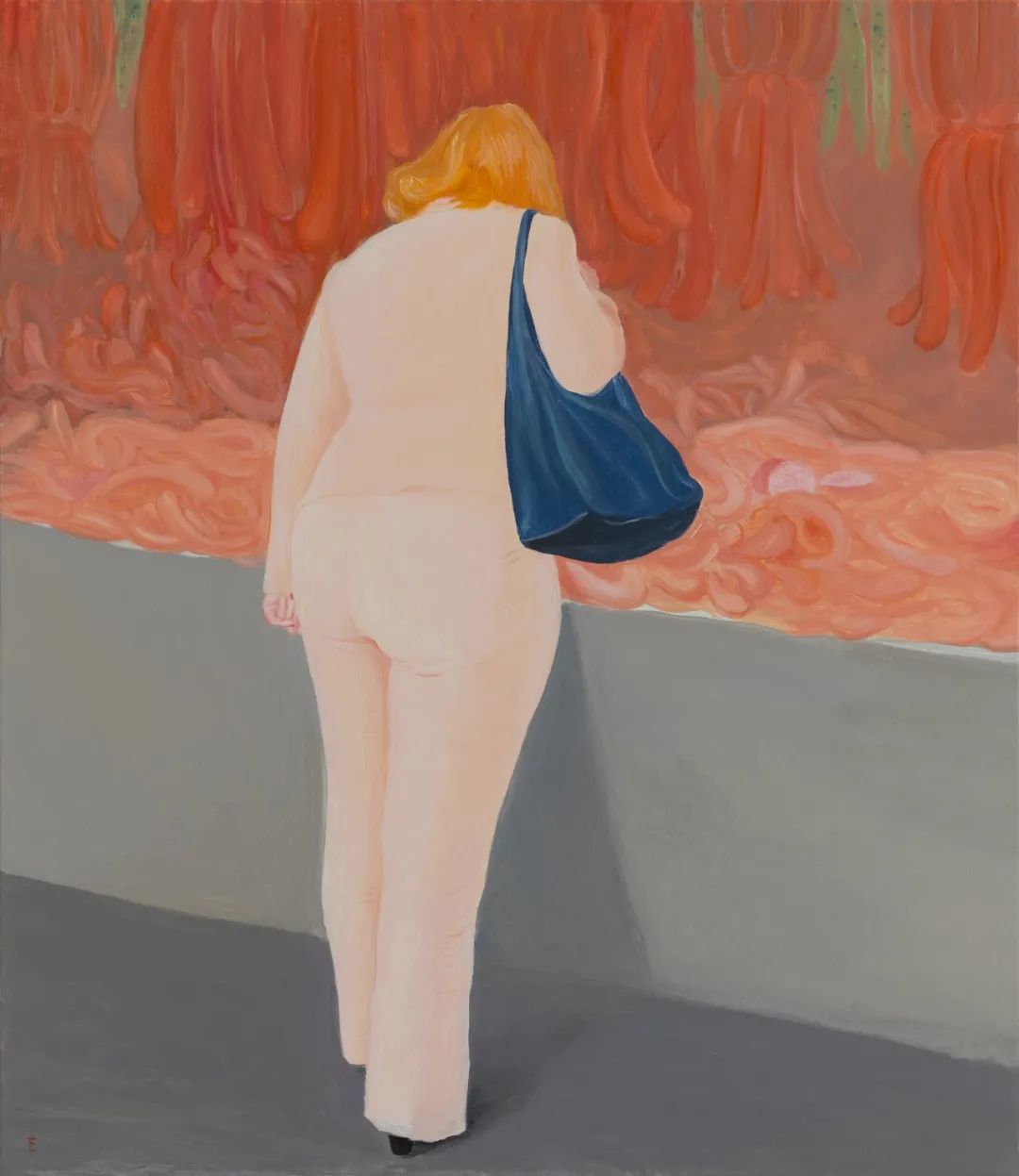
Morning Market of Prague, 60cm×50cm, Oil on canvas, 2021
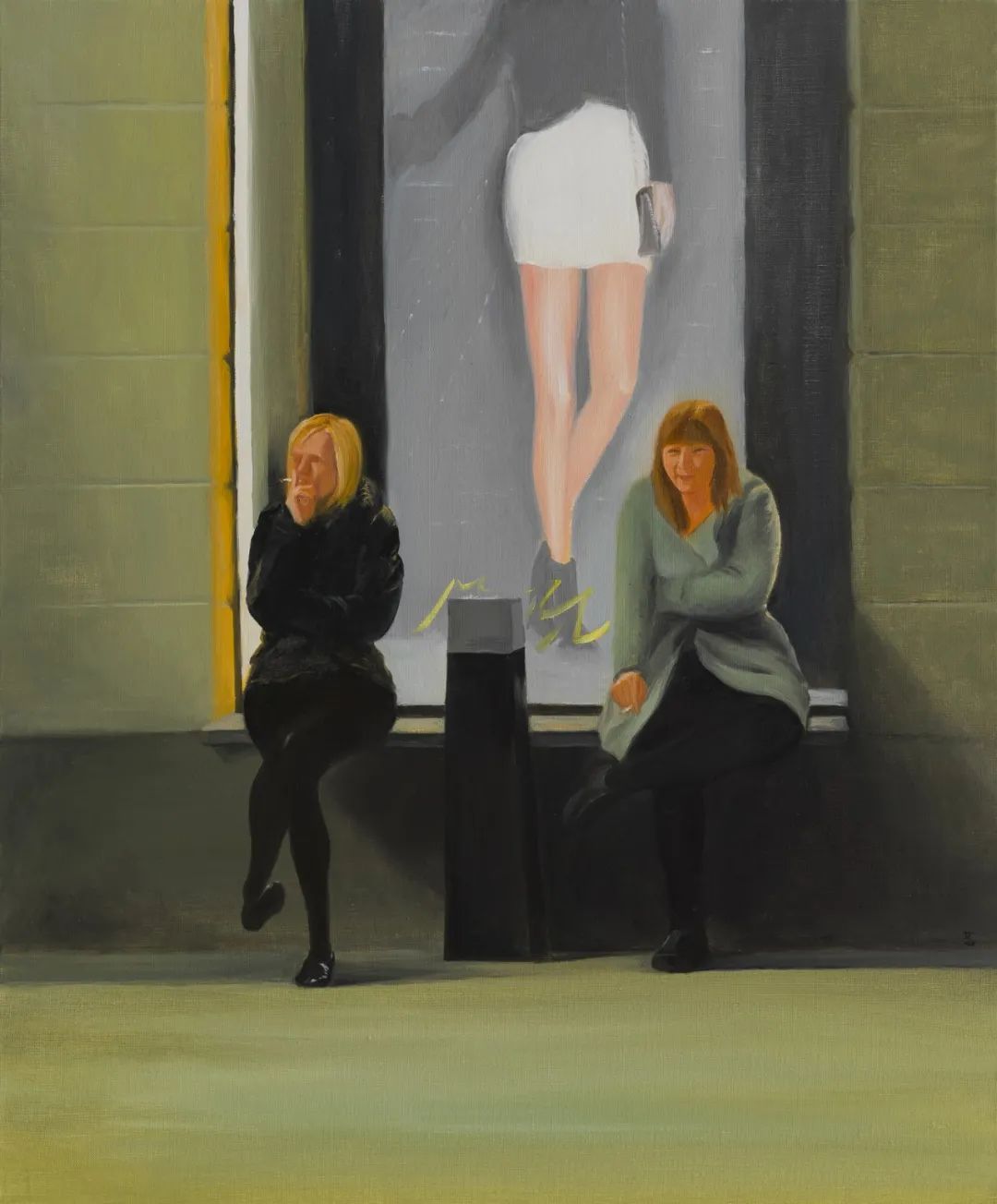
Three Women, 60cm×50cm, Oil on canvas, 2021

Lunch, 45cm×38cm, Oil on canvas, 2020-2021
Q
In the West, their attitude towards the human body is very different from ours. They are open-minded.
Wu Yi: Open-minded is one aspect. The other reason is that they appreciate their bodies, and they believe that being chosen as models means they are gorgeous and artistic. It is a European tradition to use painting to record human beauty. We see that there are many paintings of bodies in the Louvre. At that time, they intentionally preserved the beauty and vitality of the body with paintings and sculptures. Of course, new media such as photography was introduced later. However, in Prague, most photographers still use film, developing black and white film in the darkroom. Also, many people choose to write down some feelings into diaries with pens in cafes. I suddenly found that in Prague, many traditional expressions that we have lost seem to have become a kind of eternity. They will never be gradually lost due to the rapid development of technology. I painted real people in life there, rather than a model on display. It was a natural communication.

Morning, 32cm×22.5cm, Oil on canvas, 2013
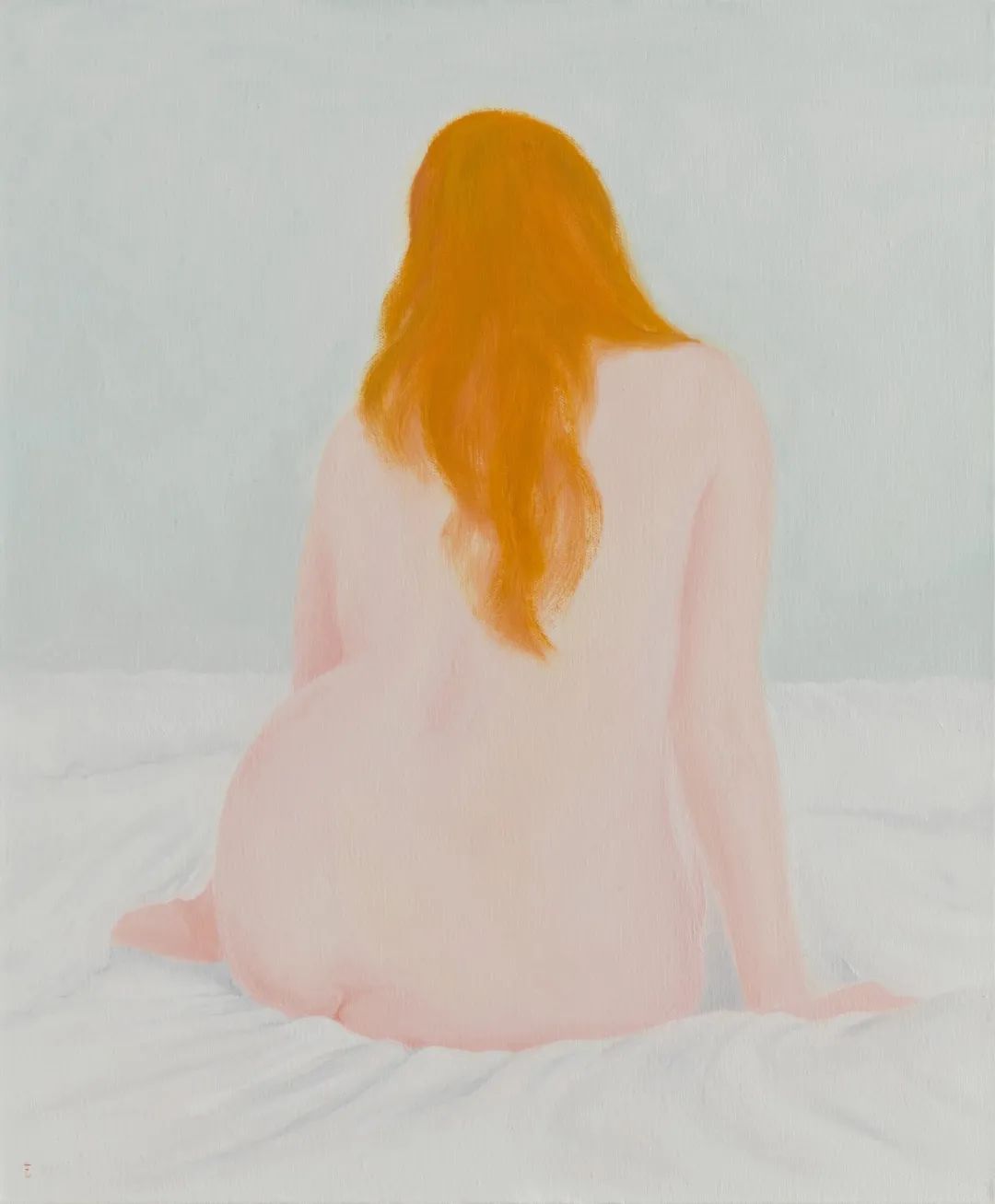
Woman I, 60cm×50cm, Oil on canvas, 2020
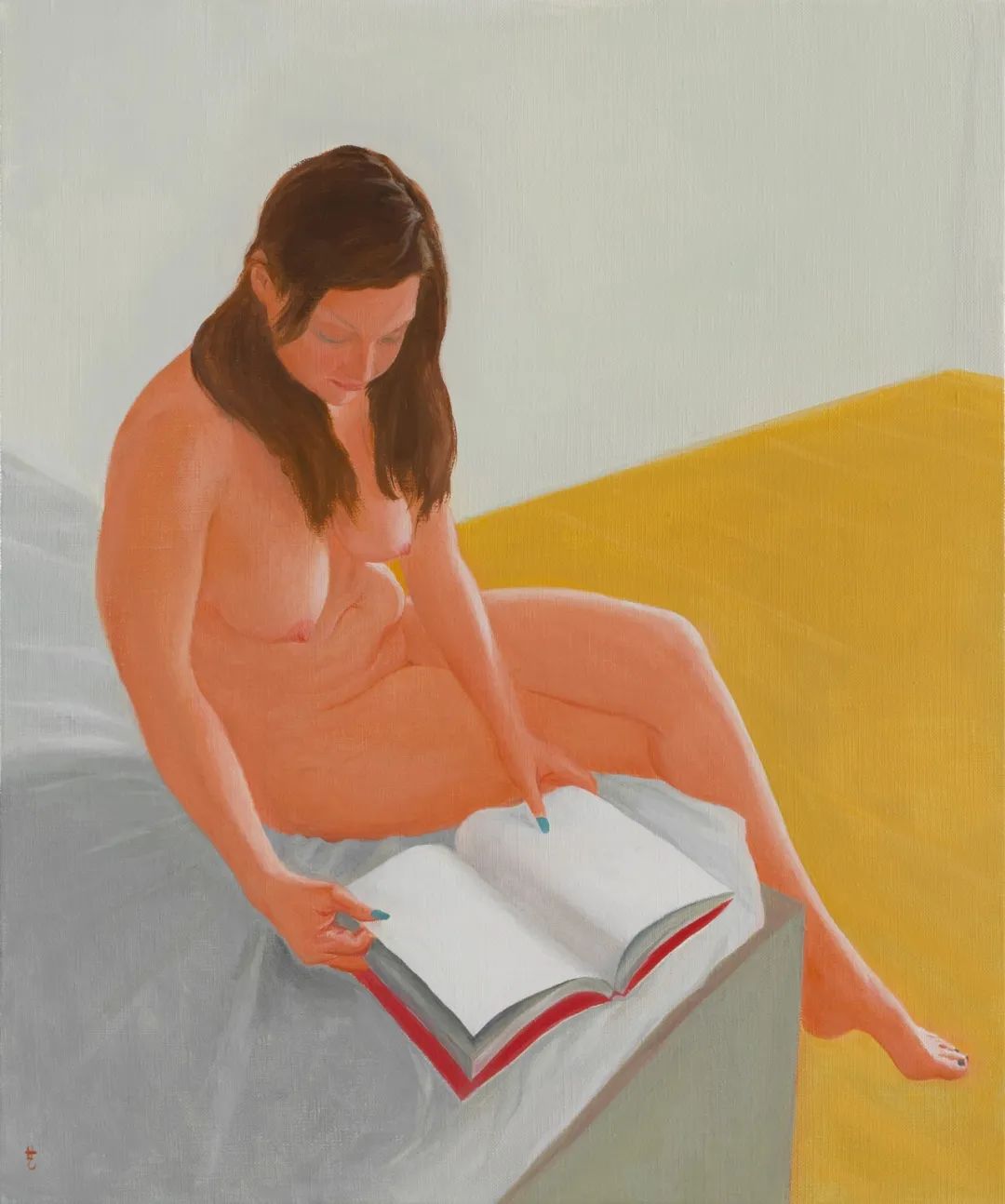
Reading, 46cm×38cm, Oil on Canvas, 2020
Q
I found that you have some partial expressions in your painting of the female body there. The Tao Te Ching published by the Czech Republic also uses your works to depict the female body parts as illustrations, which show a very ingenious and subtle attitude.
Wu Yi: Chinese artists usually draw sketches referring to Western plaster sculptures. Rather than a real person, it is a textual or materialized concept that we have accumulated for a long time. In Prague, I had the opportunity to see real “people” and observe the relationship between the concept of body and real people, which made me realize there was a transformation.

Flowers in Water, 45cm×38cm, Oil on Canvas, 2021
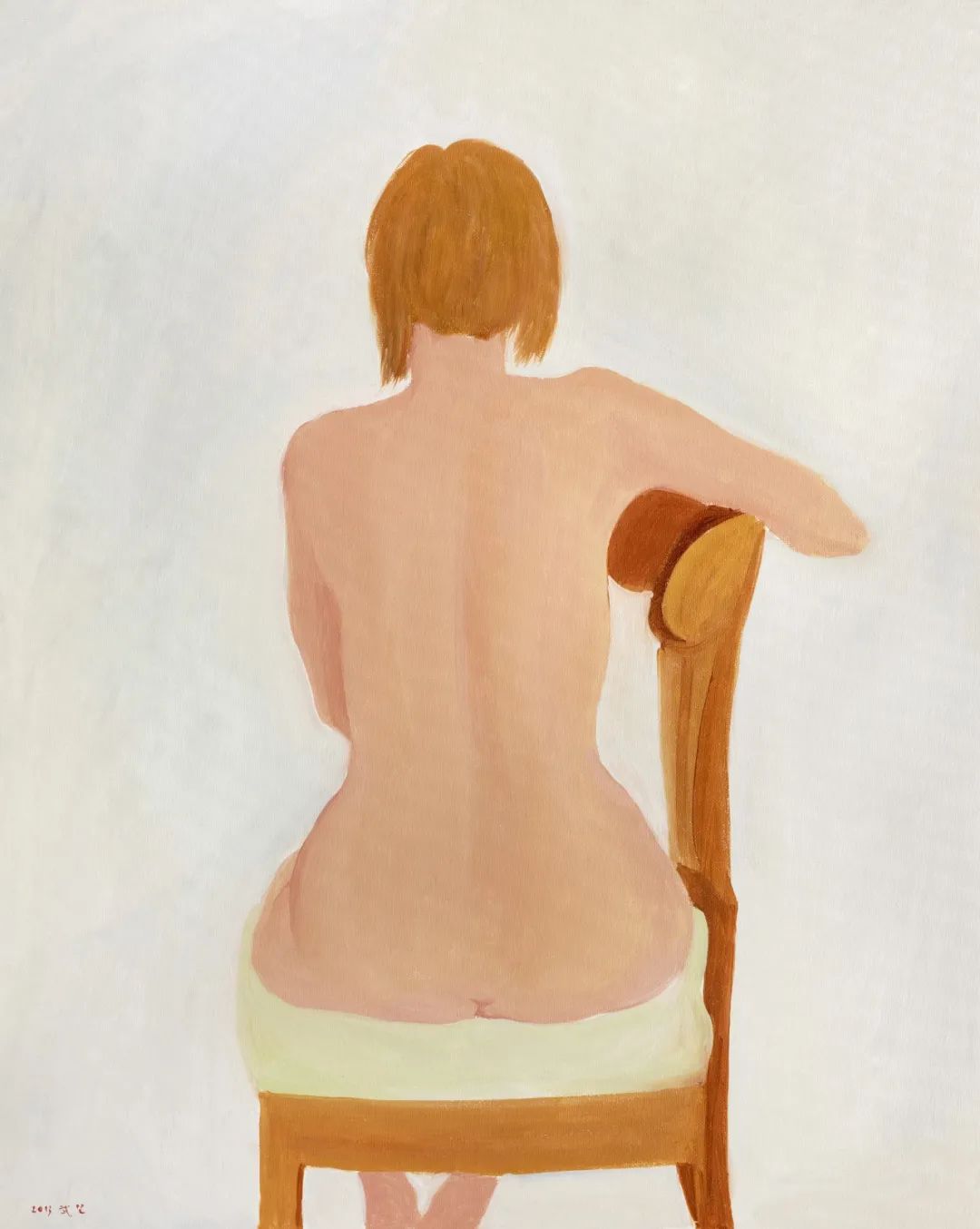
Shy, 50cm×40cm, Oil on canvas, 2013
Many of my works are named “Origin”, in fact, it is a tribute to Gustave Courbet's L'Origine du monde (EN. The Origin of the World). Using my works as the illustrations of the Czech version of Tao Te Ching is because the core of Tao Te Ching is considered as having a lot of connections with the origin of life. The European Center for Chinese Language Studies is in Prague, which is very interesting. At Charles University, every generation of sinologists is translating the Tao Te Ching. Previously, they had been looking for European or American painters for illustrations. After I arrived in Prague, they felt that this book finally found its root—it should be the Chinese who create the illustrations because Western artists understand Tao Te Ching in a different way. When they see my works, they believe this series of paintings reveal the core of Tao Te Ching.
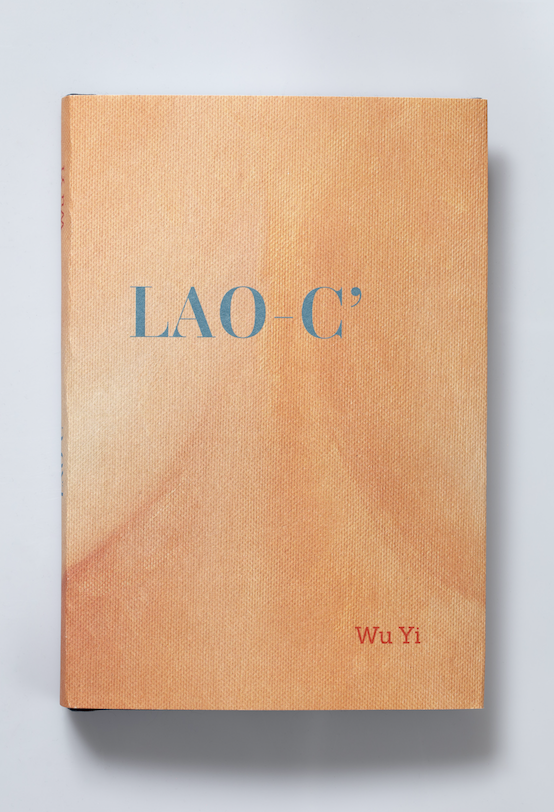

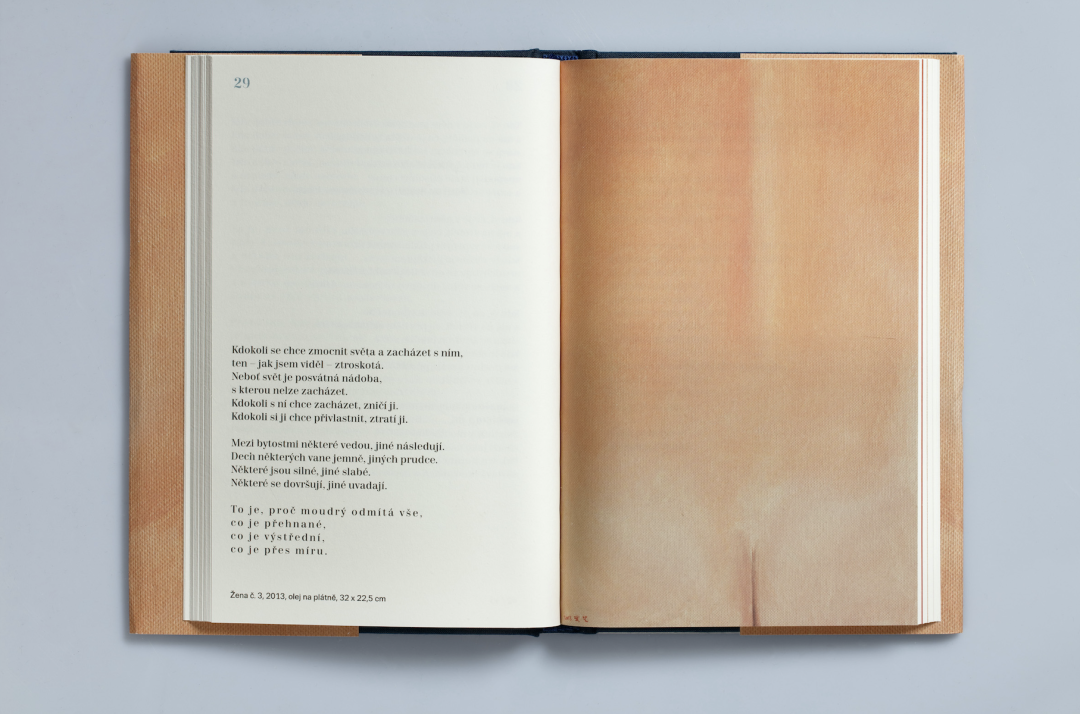
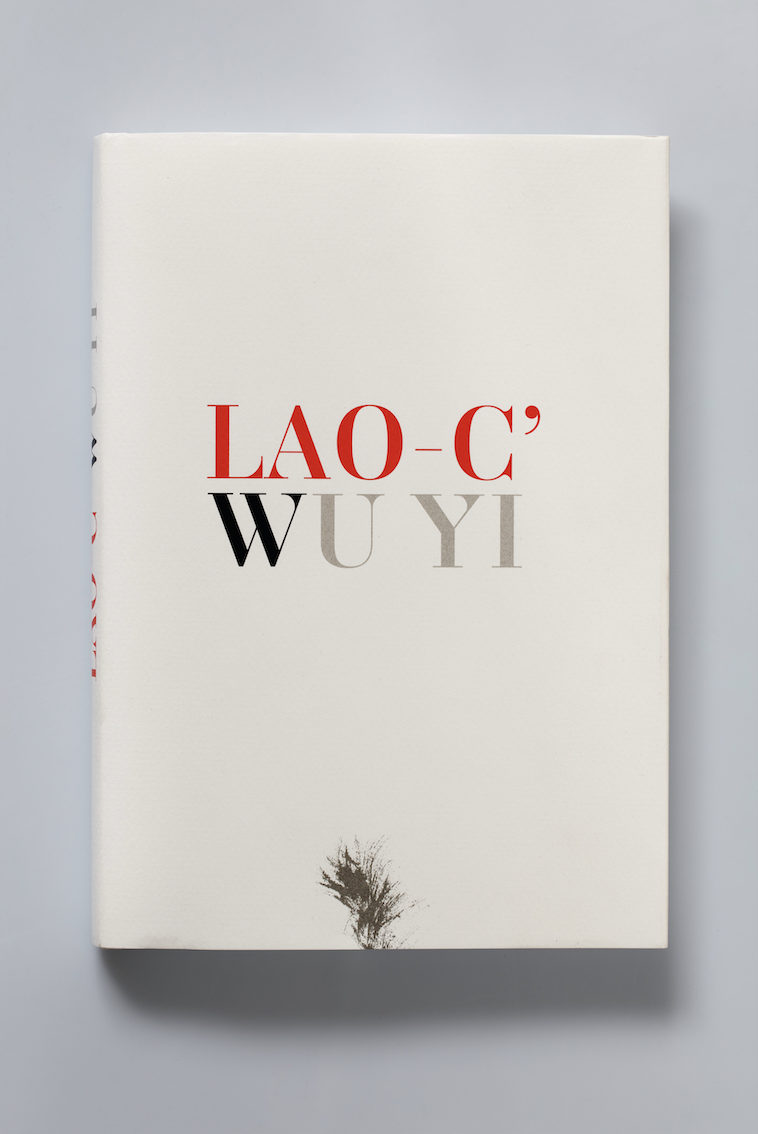
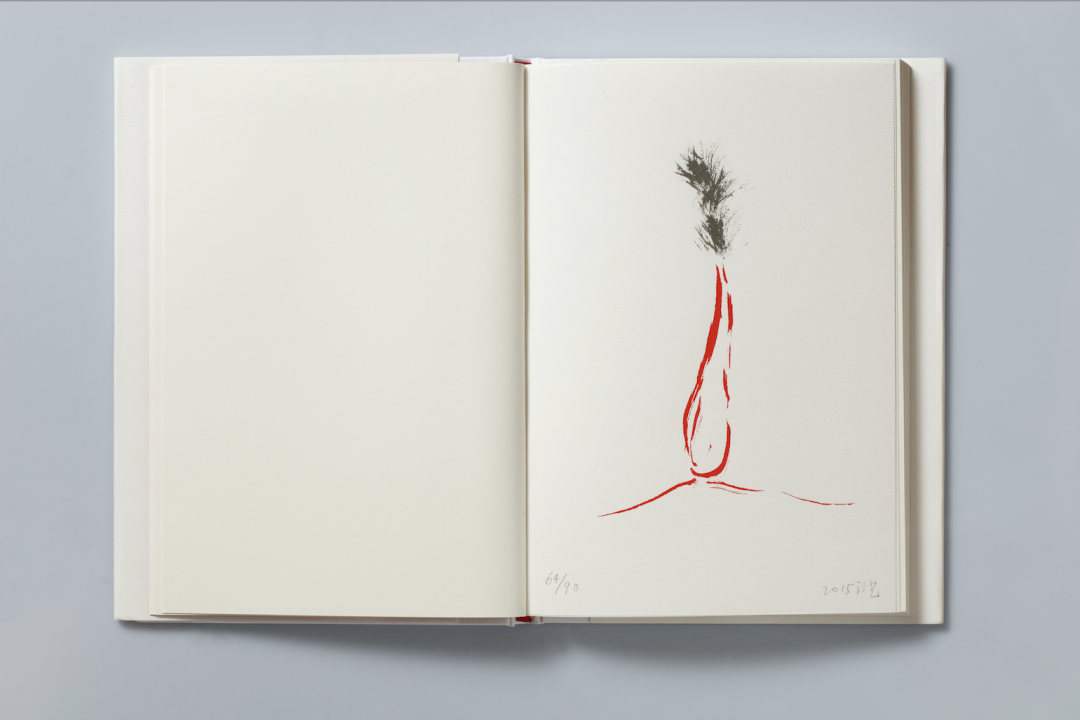
Lao Tzu: Tao Te Ching, illustrated by Wu Yi, Signature Edition, published in the Czech Republic in a translation by Berta Klebsova (1971) (cover and inside pages)
Q
Do you have any impressions of the city before and after your visit to Prague?
Wu Yi: My first knowledge about the Czech Republic came from “Little Mole” and “The Good Soldier Schweik” when I was a child, and I thought the country was very humorous. In 2013, I watched a beautiful Czech film “Kraska v nesnazich” on the Internet. The director in this film deals with the complex relationships and inner emotions of the characters in a very delicate and beautiful way. I feel that the director provides an objective and equal perspective when making a movie of this kind, instead of making moral judgments, but just presents human nature. Many Japanese movies can also capture very fine, tiny and inconspicuous things at a slow pace so as to reach an extreme and delicate place which is difficult for us to realize. As for this Czech film, rhythm and dramatic conflict are stronger than in Japanese films as there are complicated stories and relationships. It makes us reflect that everyone cannot be easily judged by morality. Also, the film reflects many things on an aesthetic level. After watching it, I immediately wanted to visit the Czech Republic.
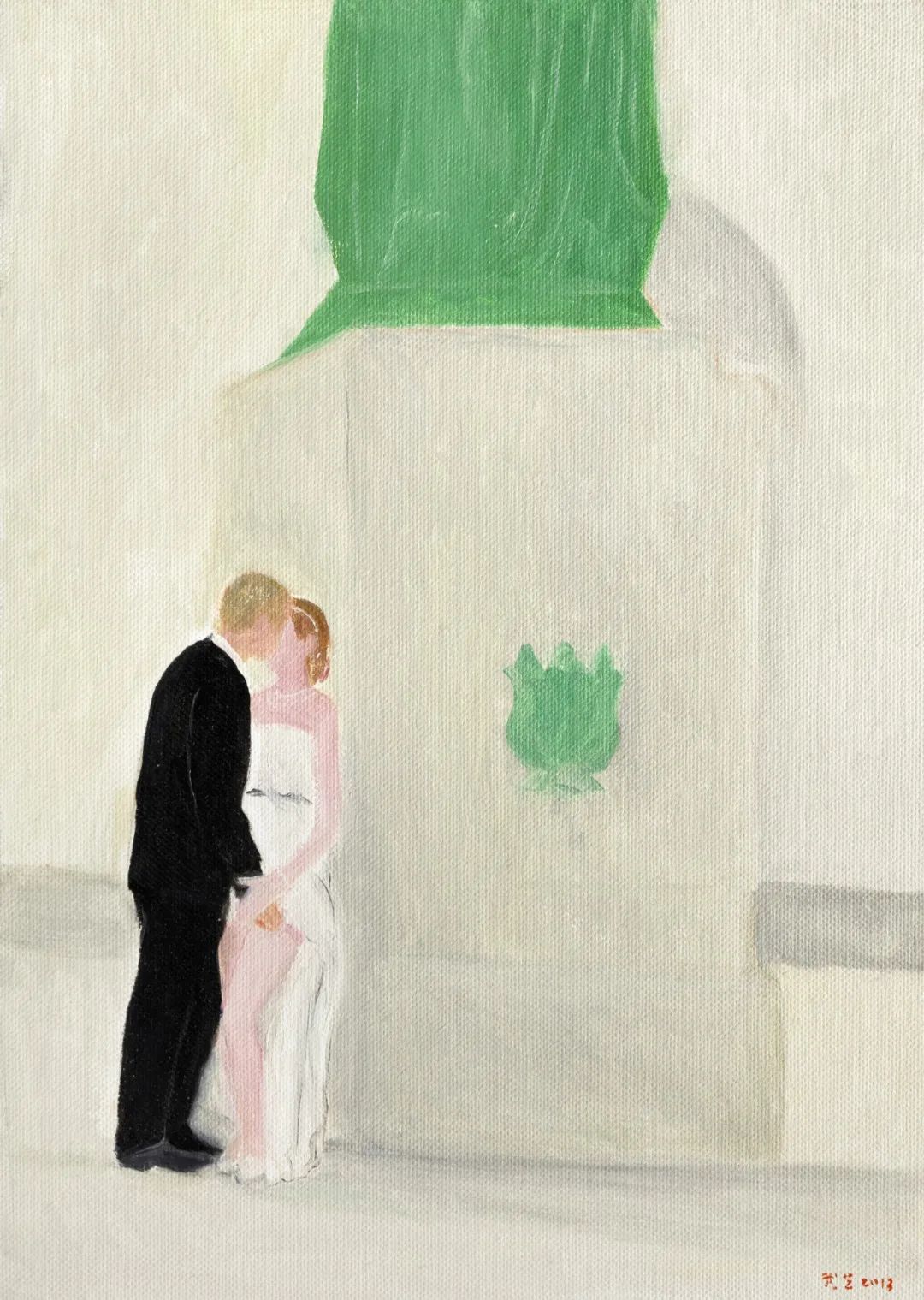
Wedding, 32cm×23cm, Oil on Canvas, 2013
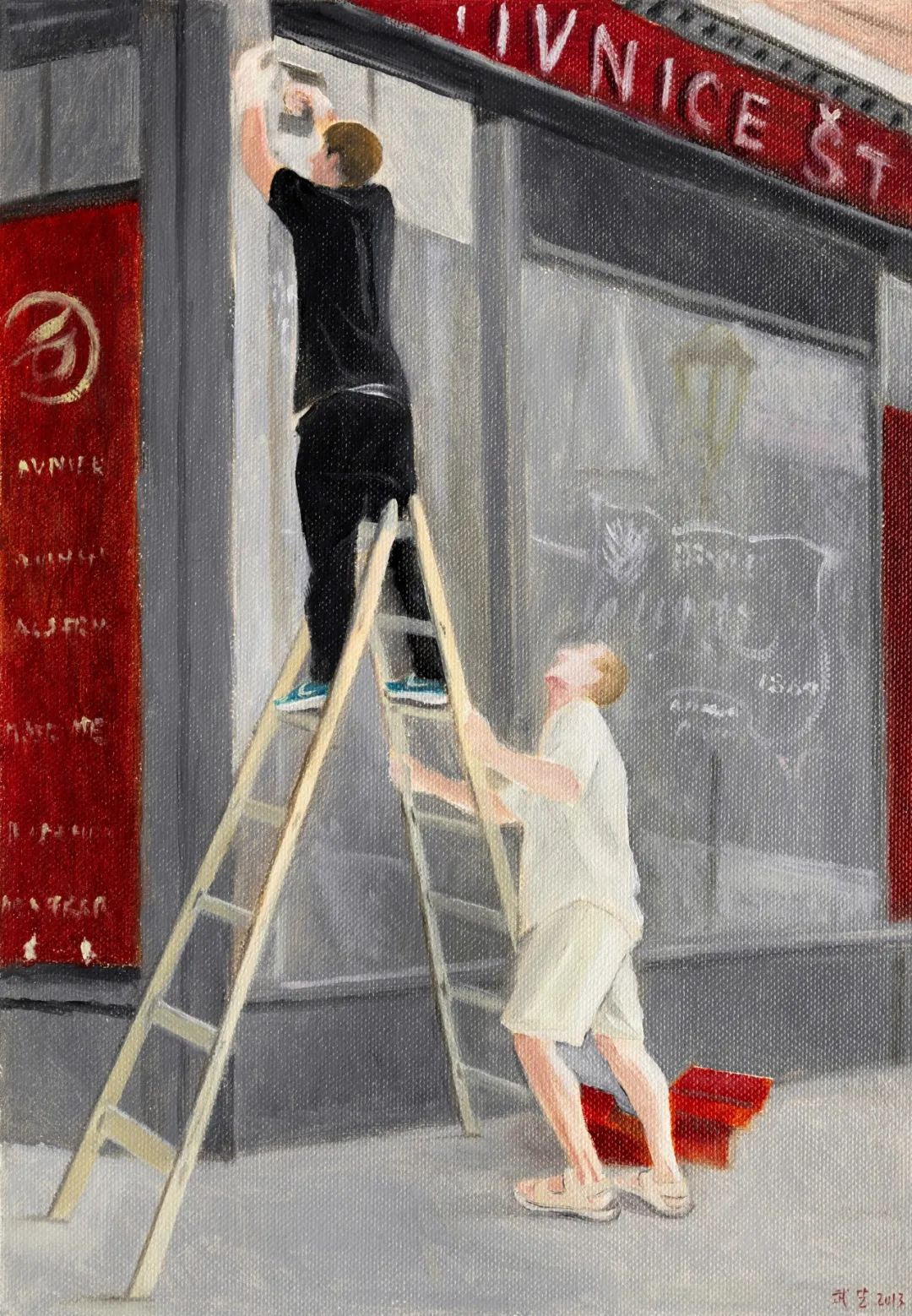
Father and Son, 32cm×22.5cm, Oil on canvas, 2013
When I arrived in Prague in person, I felt like it was such a “sexy” city. “Sexy” herein is not a restricted word, but a harmony between people and the environment in this city. Indeed, there are many interpretations of being sexy. There are some totems of fertility worship in Prague, including the railings on the road and the shape of the buildings. These things have returned to the original state of life when God created man. There is actually a sexual component in my entire painting, but it has to be sublimated. For example, how to express it more purely? In fact, we Chinese have a relatively shy attitude towards “sex”, but in Prague it can be sublimated to the harmonious relationship between humans and nature. It is beautiful, rather than filthy and narrow-minded, but more of a harmonious state in which people and nature embrace each other. Drawing these things in the framework of macroscopical thinking can surpass the personal understanding of these aspects.
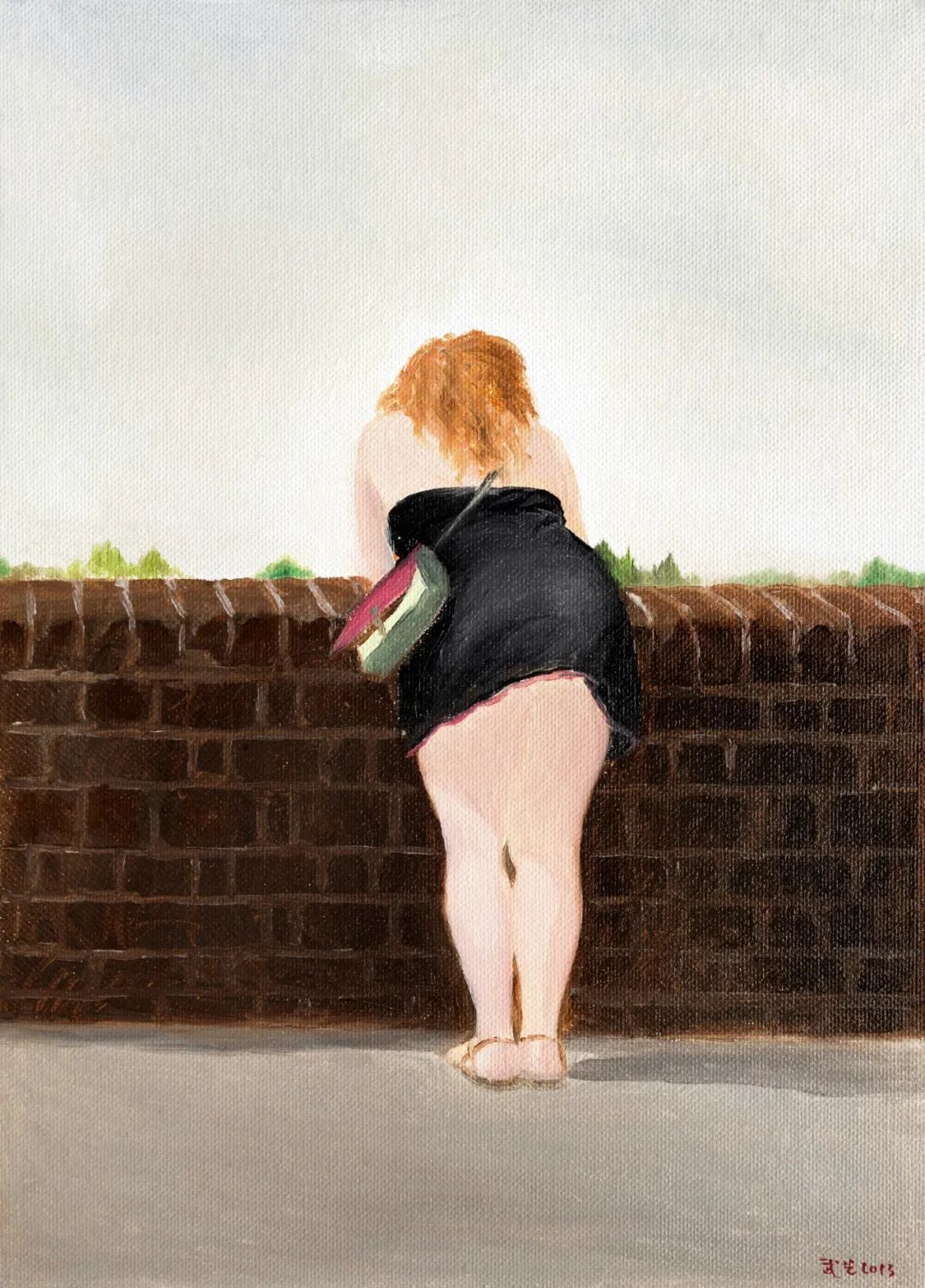
Overlook I, 31cm×22.5cm Oil on canvas, 2013
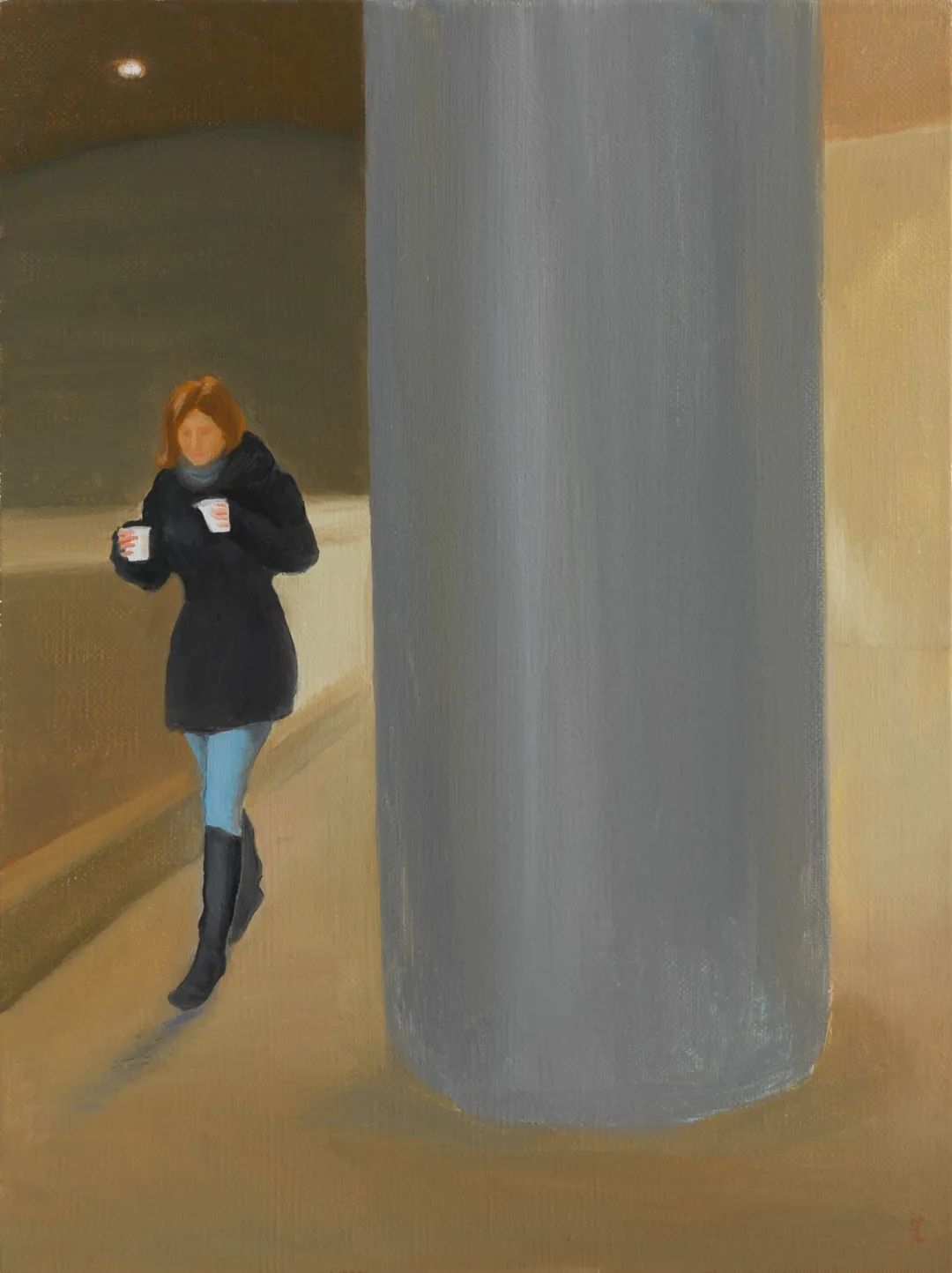
The Hot Coffee, 40x30cm, Oil on canvas, 2021
02
“The value and aesthetics of painting are everlasting.”
Q
Over the years, you have stuck to choosing painting as your creative method and it has never changed. I would also like to discuss the value of painting in contemporary academies. This is not a fresh topic but it is still worth discussing. Nowadays, when we visit some contemporary art exhibitions, especially the exhibitions of young artists, we are fully occupied by concepts, installations, videos, etc., and painting is considered to be an artistic expression that is out of date. But in the academy, we still insist on using traditional painting as a basic training method, and we teach students techniques such as sketching and coloring. Let’s start to discuss it with your personal creative experience. Why do you still insist on painting over the years? I would also like to invite you to share your views on the phenomenon of “the decline of painting”.
Wu Yi: Personally, it is not so much persistence as a deep love for painting. The love is cultivated by my supervisors Prof. Lu Chen and Prof. Zhou Sicong. The charm of the predecessors' sensibility and talent for painting fed back to their works which may be the root of my love for painting and the heritage of painting. What they convey to me about the value and beauty of painting is everlasting.
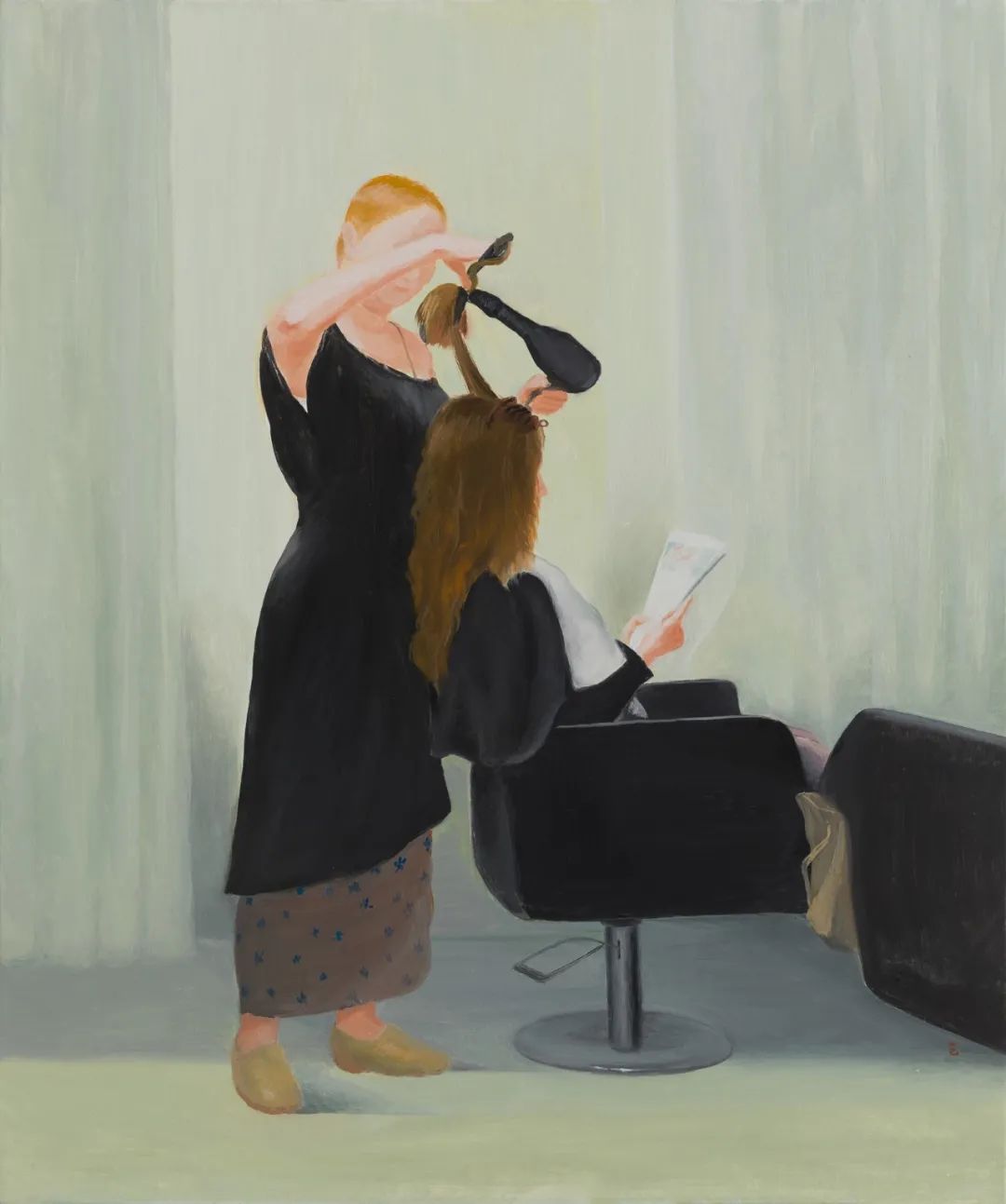
Hairstylist, 60cm×50cm, Oil on canvas, 2020
I think this is still a need for personal expression, I don't need other things to replace painting and make expressions for me. Painting satisfies my self-expression in terms of my emotions, feelings, and thoughts. It also acts well on the communication between the audience and me. In this case, painting as my expressional method meets the needs of both personal and social levels. As for the education in the art academy you mentioned just now, I just feel that the current judging criteria are not up to the academy anymore.
Q
Where is the current judging standard then?
Wu Yi: It might be on a social level. I would say the judging criteria of the Central Academy of Fine Arts are also changing. In the mid-1980s, in the era when we were studying, the teachers of the Central Academy of Fine Arts were the best artists in China, and the standards were constructed by the Central Academy of Fine Arts. After nearly 40 years of the country’s transformation, the criteria for judging have changed, and a structure or an interactive relationship between inside and outside the academy has become a daily routine. “Diversity” is the characteristic of this era, and painting turns to be more a personal behavior. Under these circumstances, to what extent can we extend our persistence to the teaching level? Nowadays, the primary channel for students to obtain information is no longer in the academy. In the past years, we could merely learn updated information and knowledge either from teachers’ words or from the only two art magazines in China. However, information in this era has little to do with teachers. Instead of discussing the profound tradition of CAFA, I think the teaching methods are more based on the personal experience of each teacher.
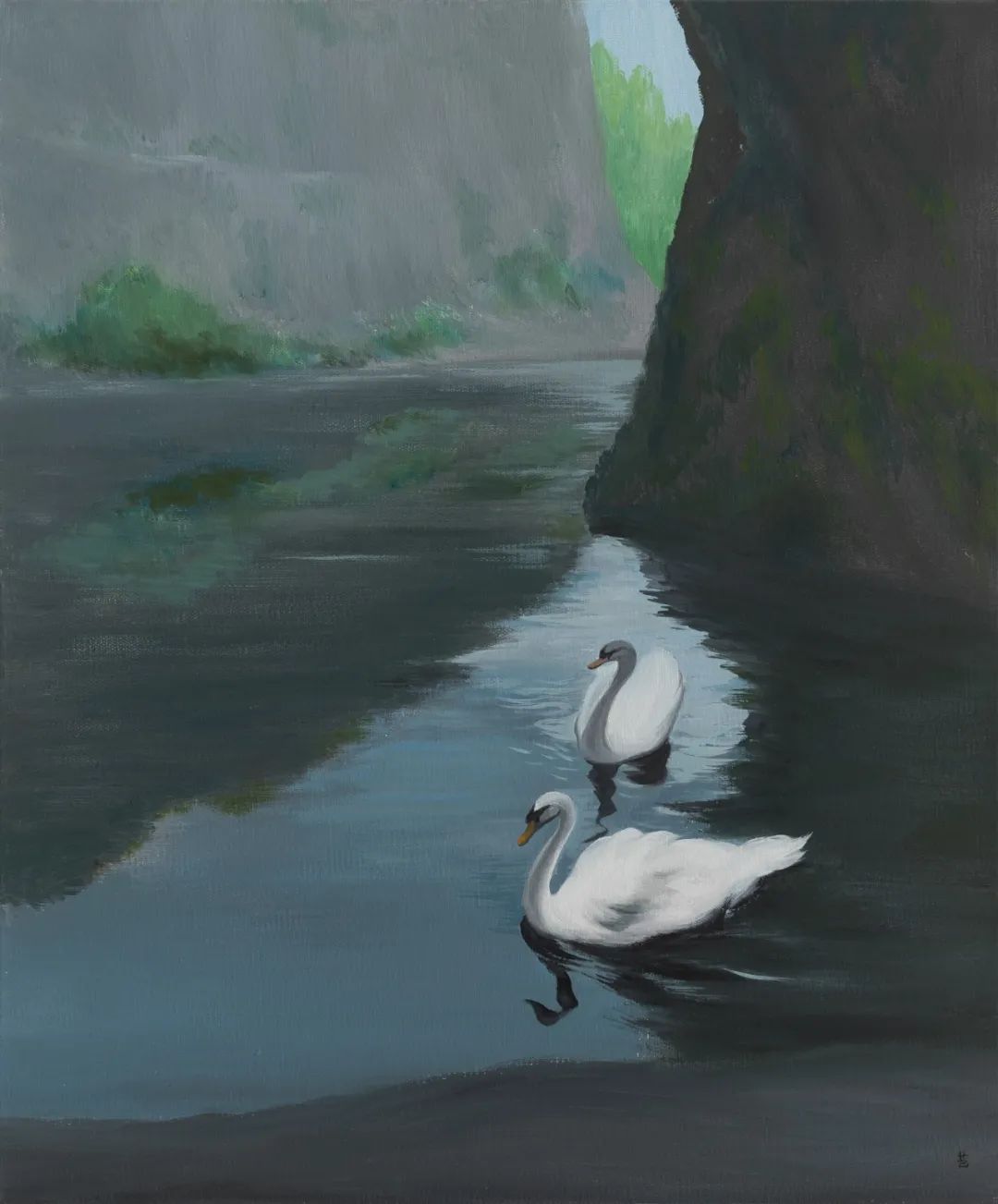
Spring Tour, 60cm×50cm, Oil on canvas, 2021
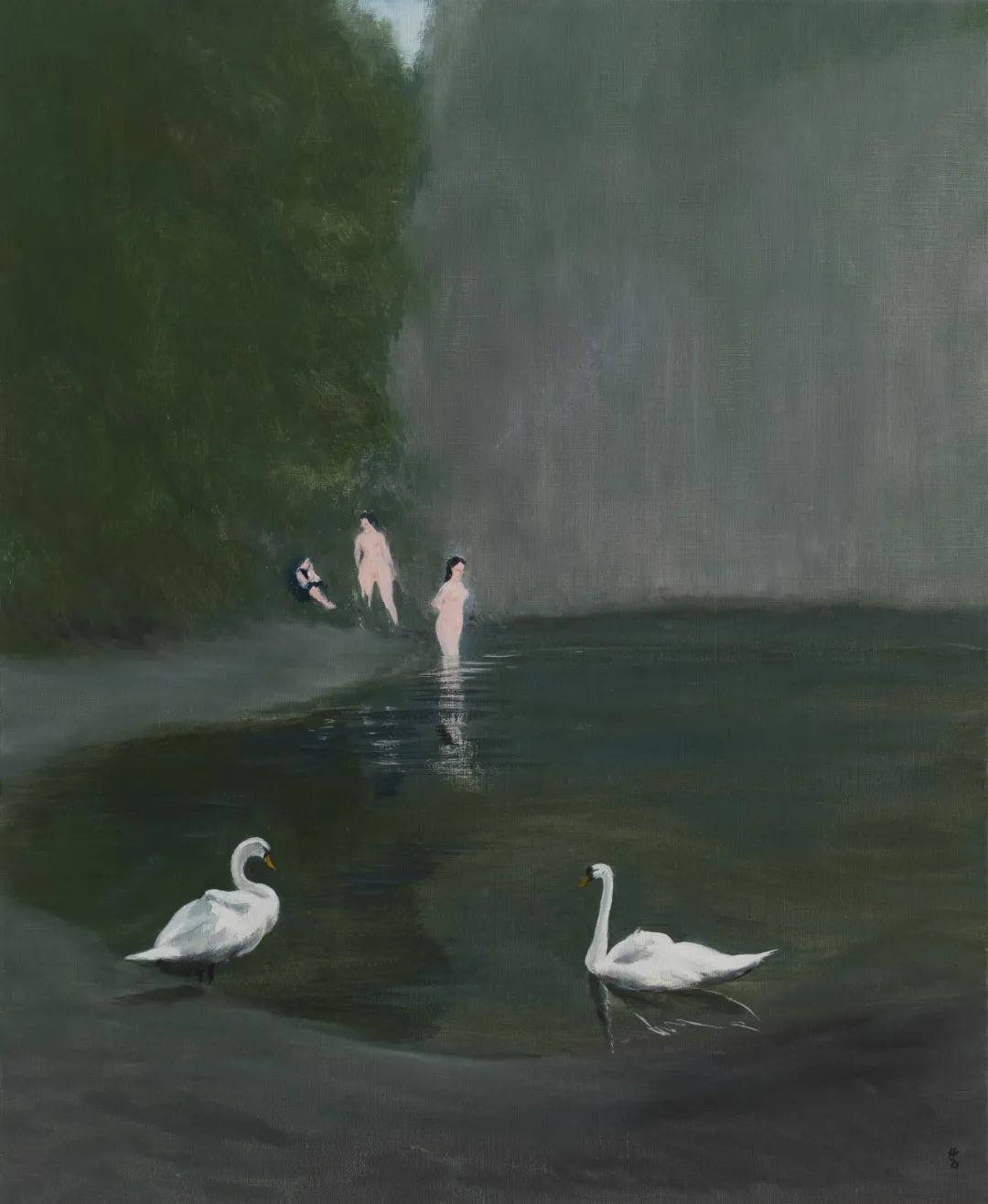
Bath, 60cm×50cm, Oil on canvas, 2021
Indeed, the tradition of CAFA has lasted for over a hundred years, but the social changes have been dramatic, which causes the fracture of many things in the cultural field. In comparison, things in the Western cultural field are relatively constant. We have experienced through the Republic of China (1912-1949), the War of Resistance, the early years of liberation, the Cultural Revolution, reform and opening up, etc. in the past 100 years. Regarding the situation in CAFA, there is no doubt that we can talk about our traditions, but we will realize that it is fragmentized, and it depends more on the presentation of each artist/teacher. For example, when we look at artists of the older generation such as Prof. Gu Yuan and Prof. Zhou Lingzhao, their personal presentations transcend the academic tradition itself.
Q
Many artists specializing in painting will show anxiety in the face of one another for a new wave of art, so they may also try more diverse art forms. Have you ever had this type of anxiety?
Wu Yi: My focus is on the relationship between my work and nature, and I extract images from nature that can touch me and resonate with me. For instance, I painted Dunhuang as the subject itself is eternal. So is Kyoto. As for Prague, the city has not been at war since the 5th century and has completely preserved its historical heritage. The presentation of these things does not need to be supplemented by other things, it is established by itself.
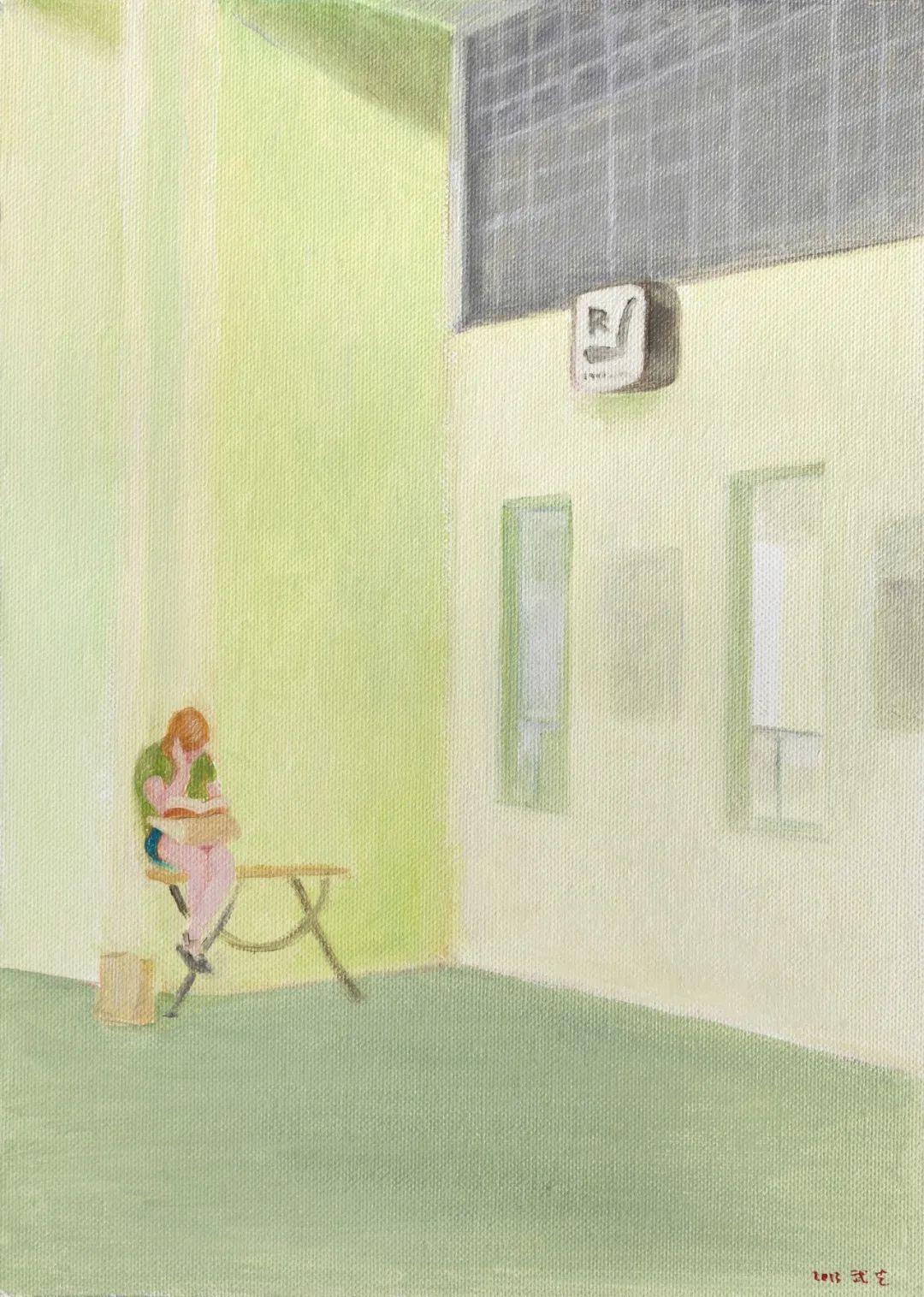
Rest I, 31.5cm×22.5cm, Oil on Canvas, 2013
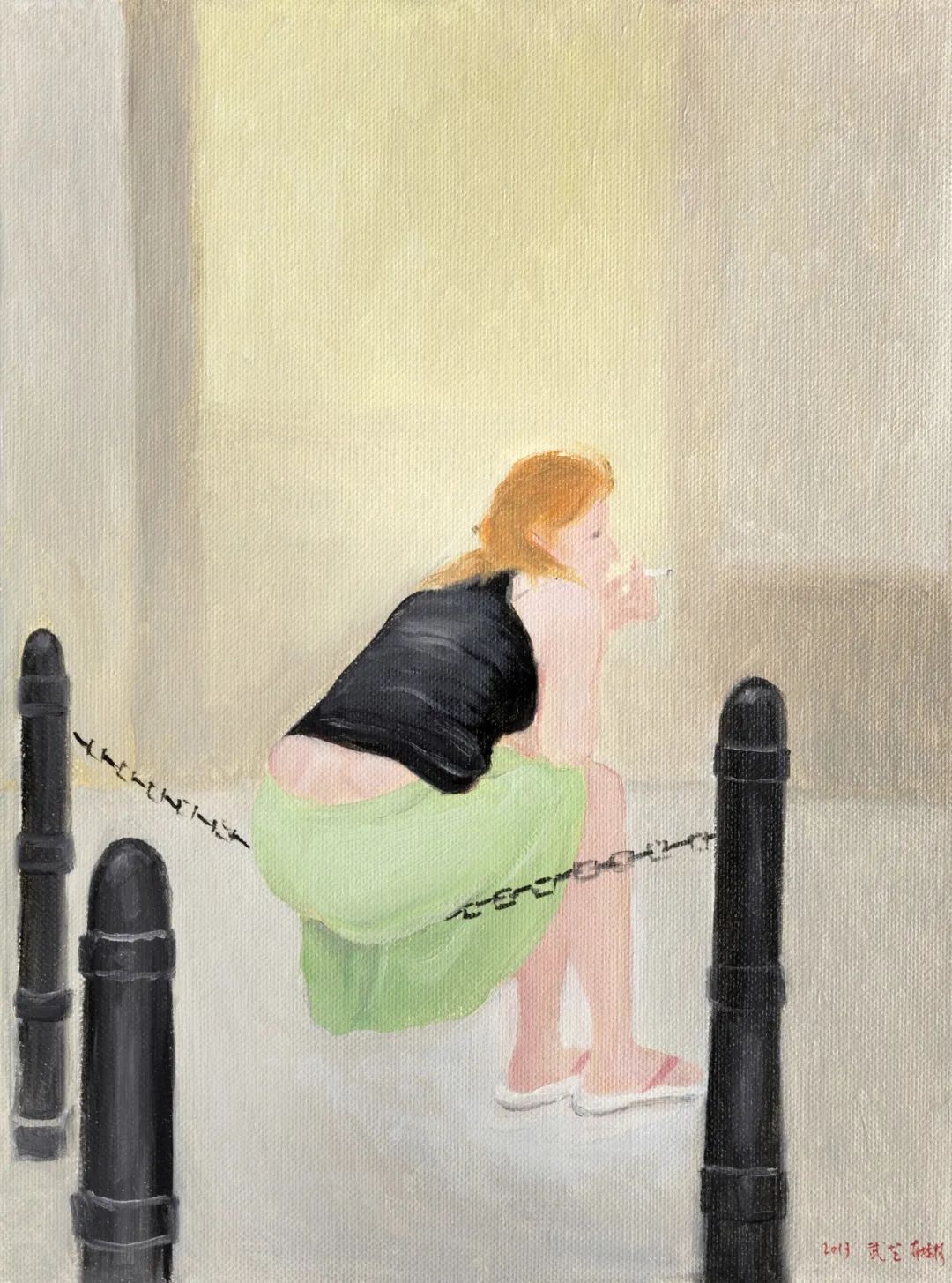
Rest II, 30cm×23cm, Oil on canvas, 2013
I am exploring a stable state between people, society, and nature. I believe such a harmonious coexistence can be continued and will never be changed. But if the realistic subject matter is represented, the artist will definitely have anxiety. Because it will change at any time with the ups and downs of society and changes in social relations. For example, when we look at Prof. Liu Haisu's works now, we cannot see the variety of times in his works from his early years to later years, which is very powerful. He emphasized the constant relationship in art rather than the influence of the times on him, or the influence of specific pictures on him.
Sometimes those who deliberately reflect the changes of the times fail to stay, while those who avoid representing the changes of the times remain.
Q
When did you develop such an awareness?
Wu Yi: Probably around the occasion when I visited Paris in 2002. After arriving in Paris, I felt like the whole rhythm slowed down. At that time, I went to the Asian Art Museum in Paris and encountered Jin Nong’s (b.1687-d.1763) work by accident. I suddenly felt they were inexplicably elegant and fresh. It was totally different from the feeling when I had seen Jin Nong’s work in the Forbidden City. It was just too “concrete”. In comparison, when I looked at Chinese traditions in France, due to the change of time and space, I felt it was more accurate instead.
It is significant to work hard to achieve something. I remember it took 40 hours to get to Dunhuang by public transport. The process of the reverent trip was dramatically tough but holy. Nowadays, such a complex experience is missing because we only need 2 hours to get to Dunhuang by air. I think sometimes people need a dislocation of time and space to see things.
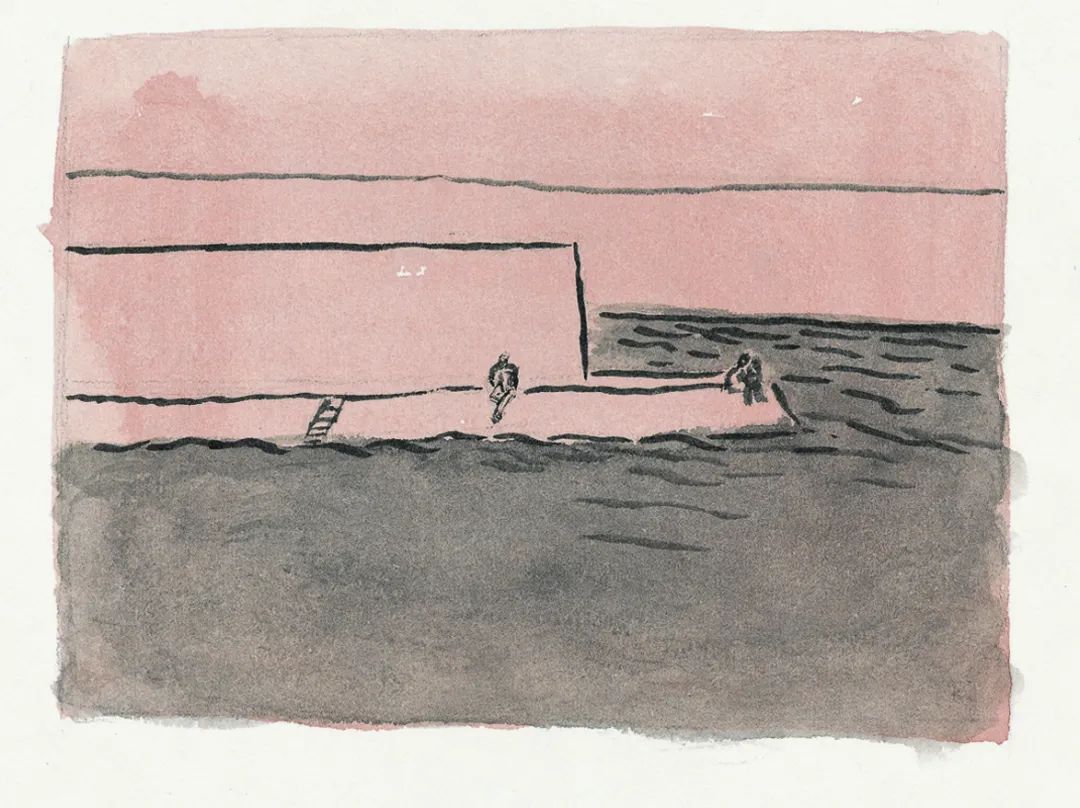
The Seine, Ink on paper, 2002
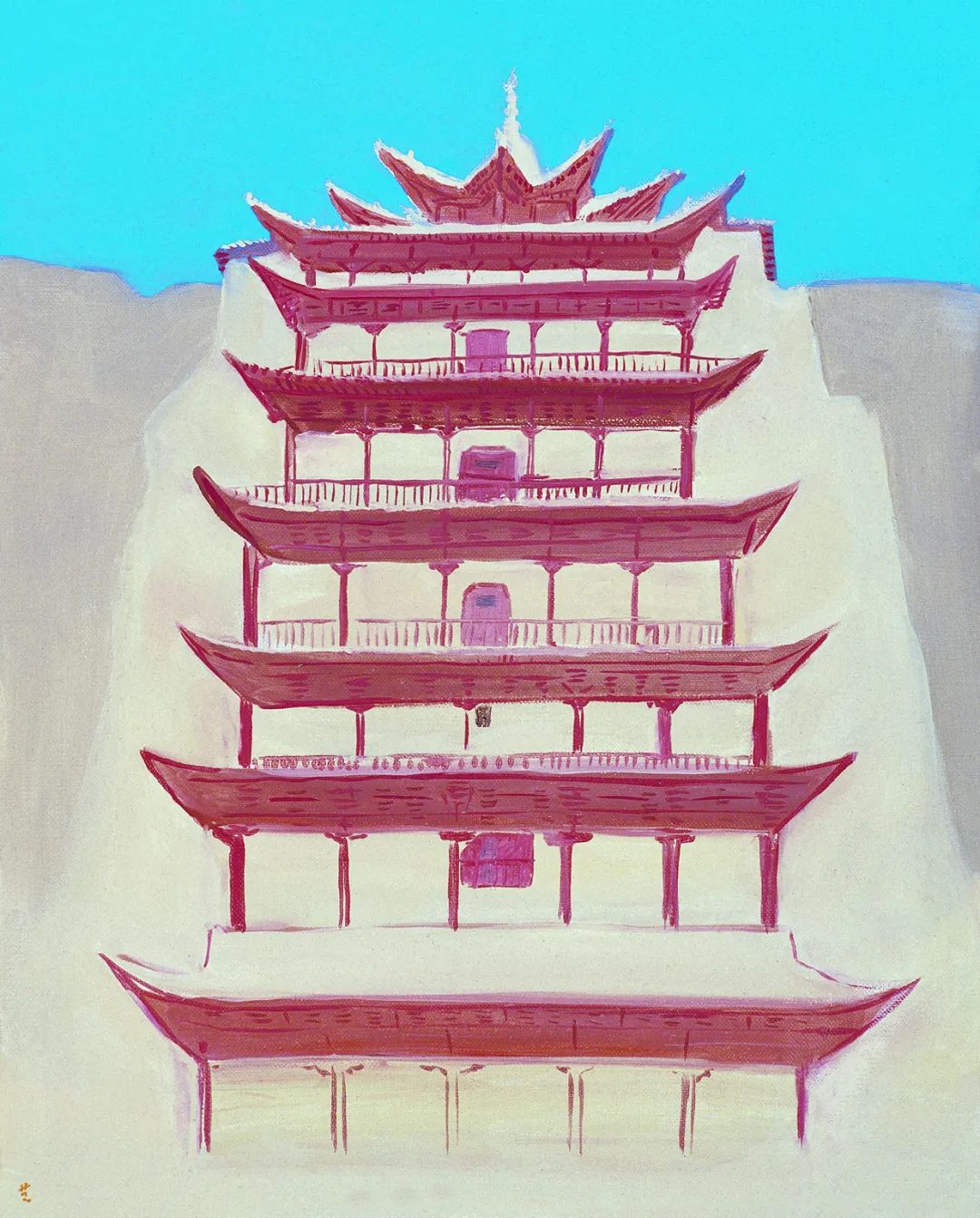
Nine-Floor of Mogao Grottoes, 50cm×40cm, Oil on Canvas, 2010
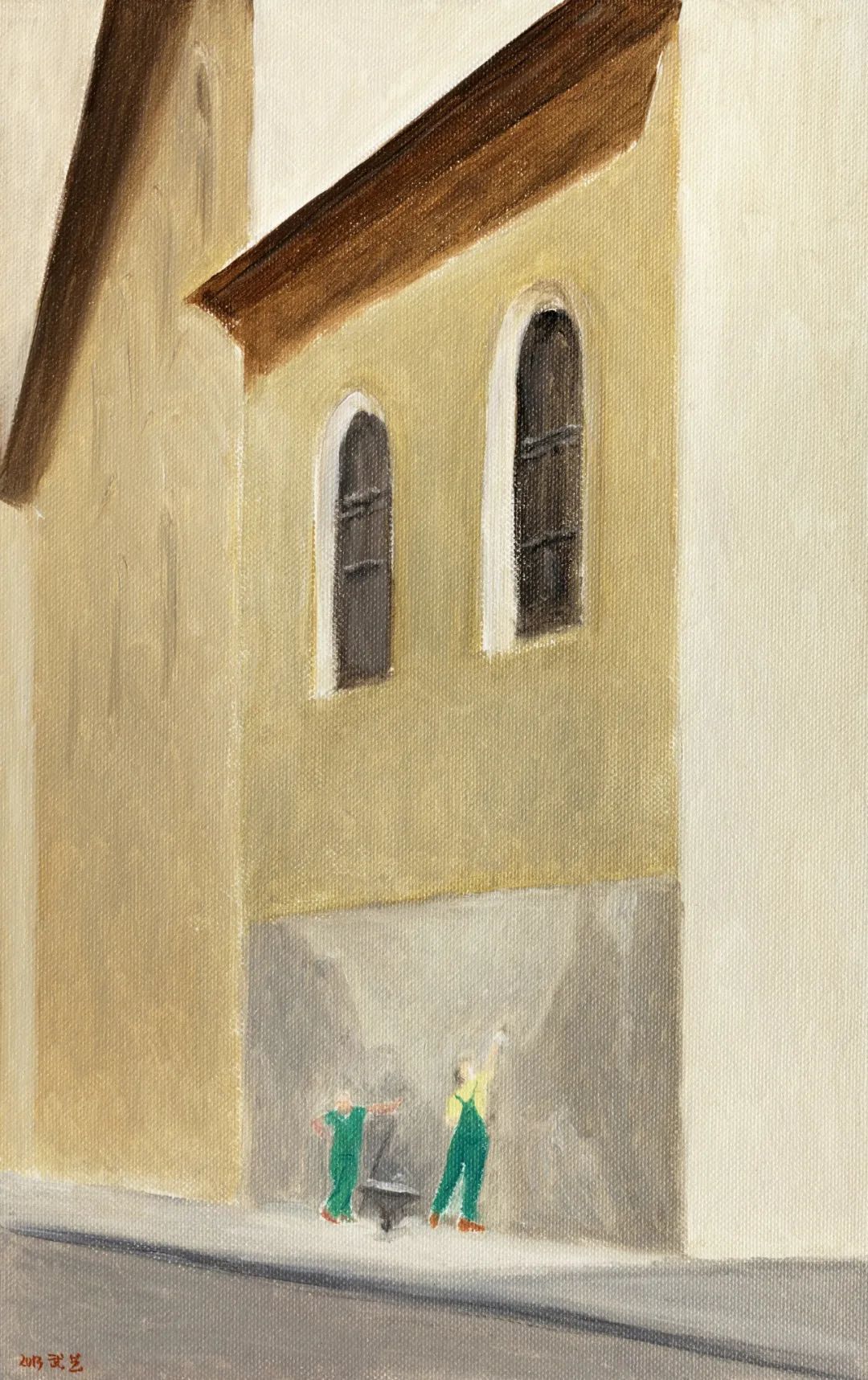
Maintenance, 35cm×22cm, Oil on Canvas, 2013
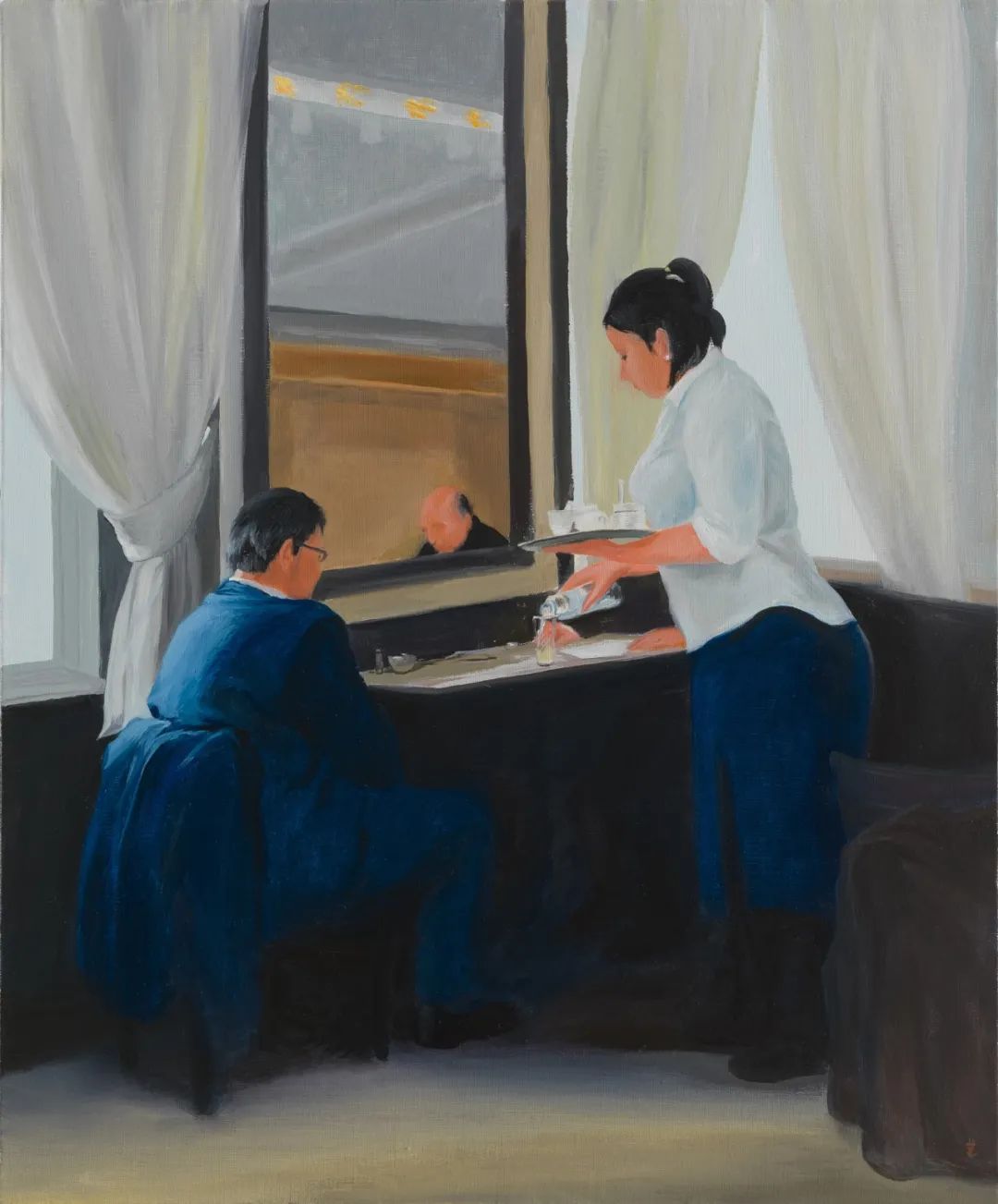
Waitress, 60cm×50cm, Oil on canvas, 2021
Q
So the experience in Paris was actually a very crucial turning point in your creation, and it probably laid the foundations of your creative method from then on.
Wu Yi: Yes, it is an editorial method of creation, which regards the presentation with a book as necessary. I have 40 publications now, travel notes are part of them, as well as personal catalogs. I care more about texts than exhibitions because I could only read prints when I was a child. The original works were inaccessible in the old days. I think that's why I want to show my creations in publications. In the past, we always struggled with the color or the quality of the print, but it didn't really matter. The works printed in the book will form another kind of beauty. If we consider it in this way, the meaning of the text will come out.
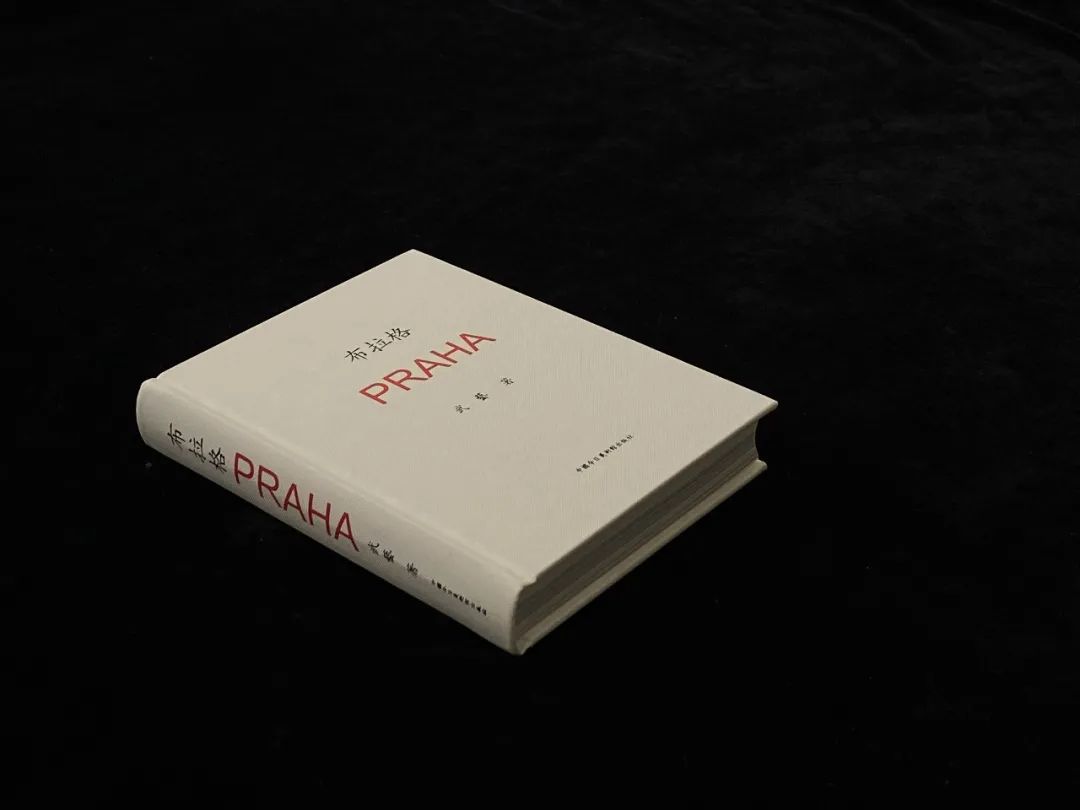
Wu Yi, PRAHA, China Today Art Museum Press Co., Ltd.
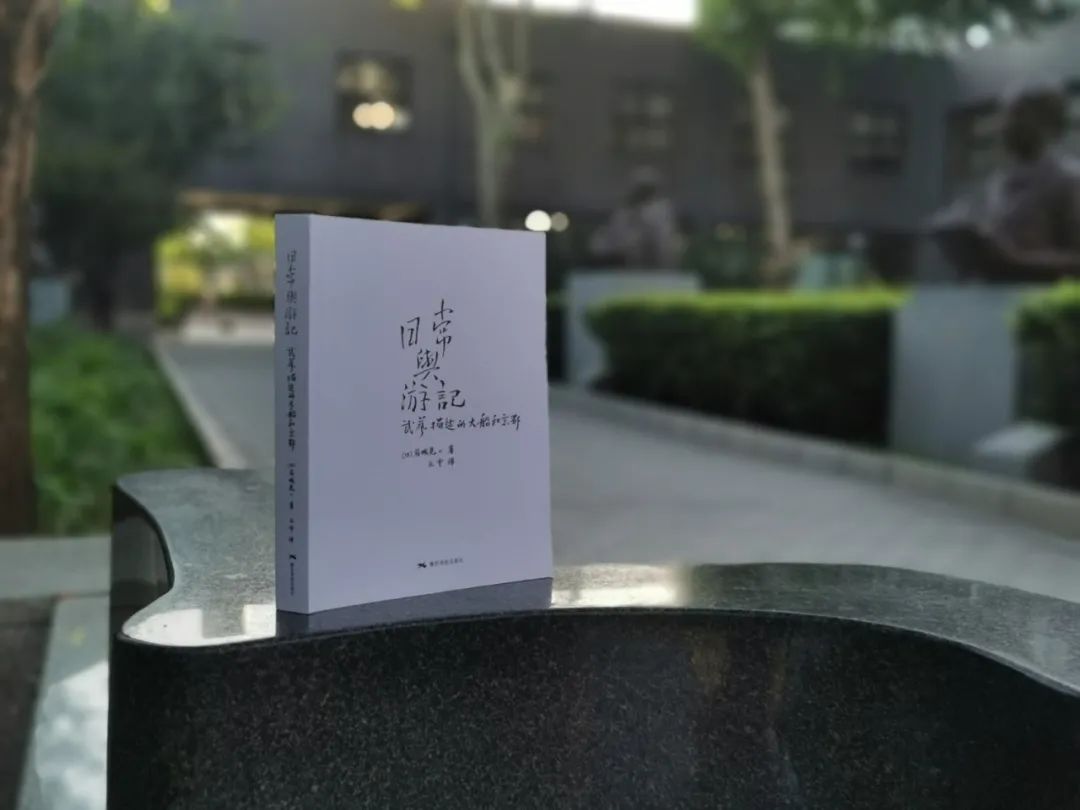
Daily and Travel Notes: The Ship and Kyoto Described by Wu Yi, written by Kenichi Iwaki, translated by Wang Yun, Guangxi Fine Arts Publishing House, 2019
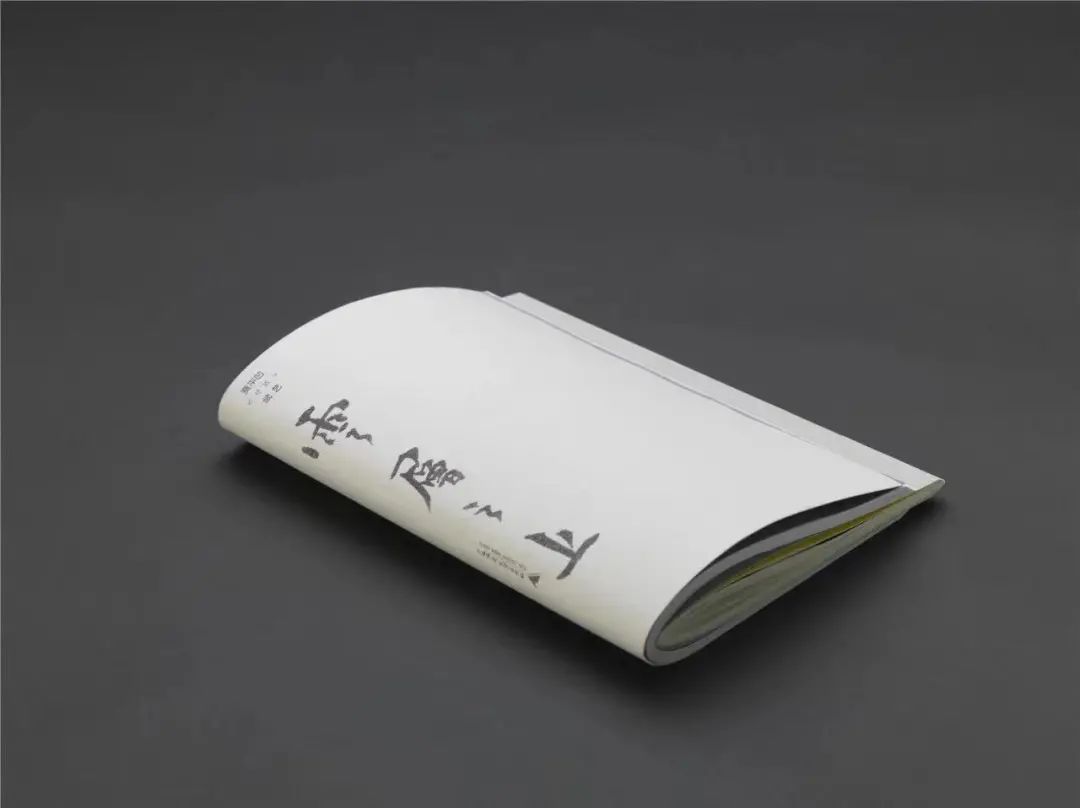
Above the Clouds—Jia Pingwa in Dialogue with Wu Yi, Guangxi Normal University Press, 2020
Writing is a supplement to my painting. I was obliged to use words to “sketch” due to the lack of painting tools sometimes. I always write down the details of daily life as I have encountered it. When I return to my studio, I can paint according to my texts. Words are my materials. Although different creative means can interlink with each other, I still attach great importance to the contemporary presentation of painting personally.
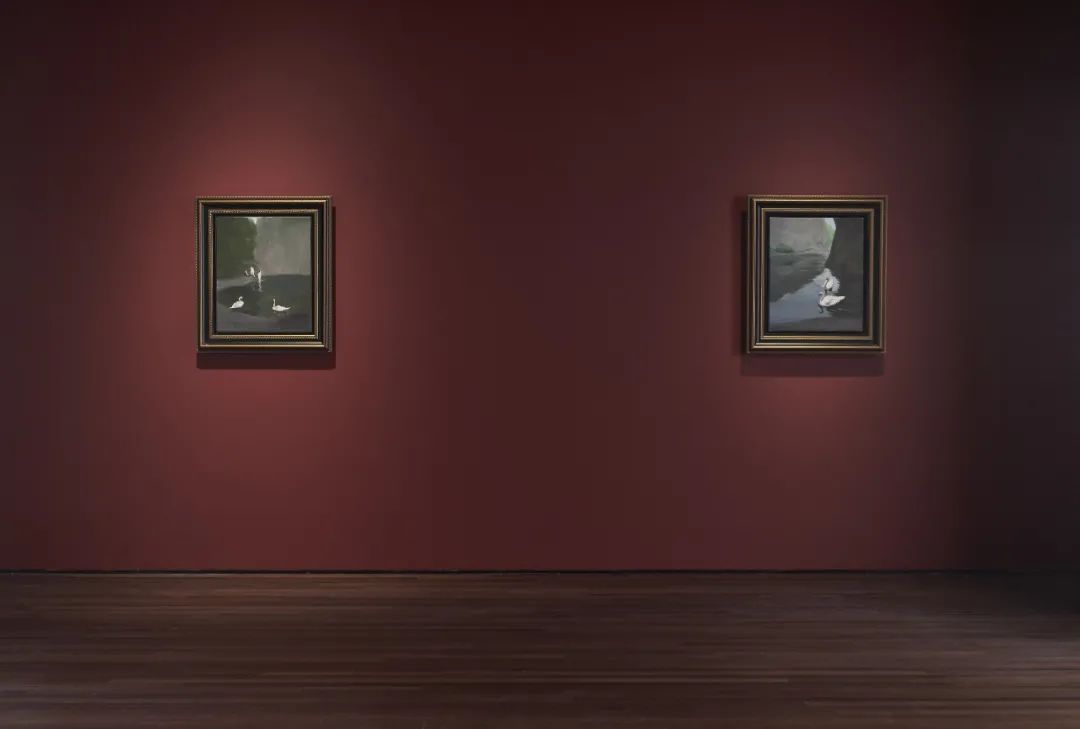
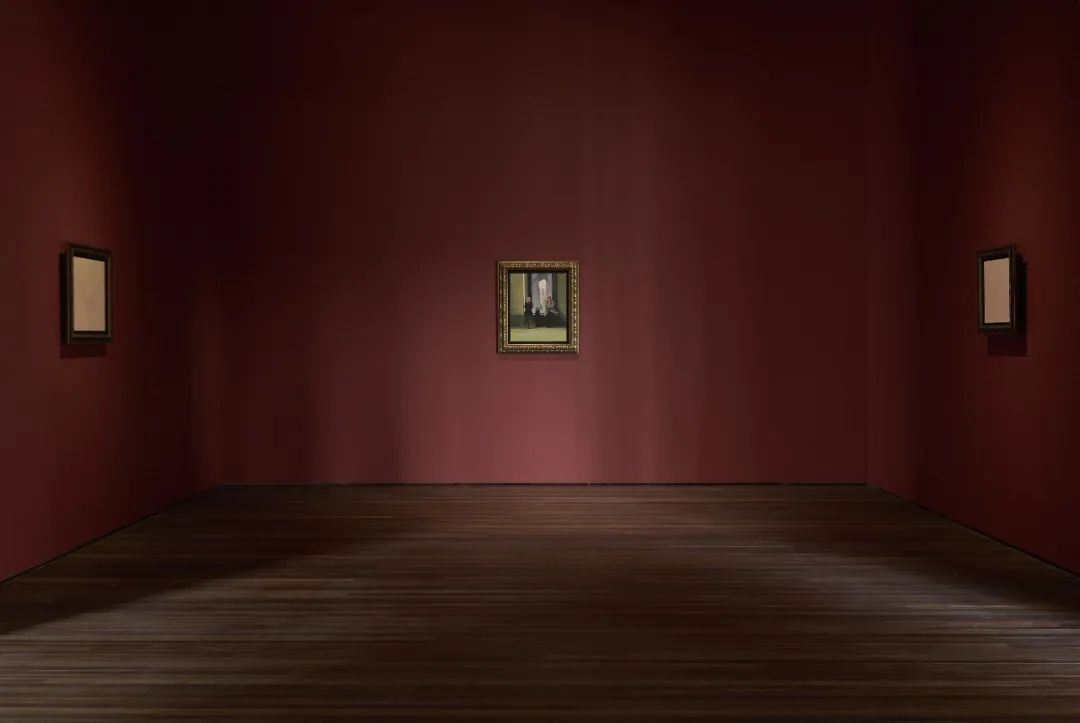
Exhibition View of “Prague—Wu Yi”, Song Art Museum, 2021
Q
You just mentioned the eternal beauty of the painting.
Wu Yi: The aesthetics of painting is timeless, which works both in the East and the West. Why are David Hockney and Morandi so popular? The painting will not disappear, but will increasingly become the mainstream. We are clear that many concepts of contemporary art creation are presented vaguely. However, painting, on the contrary, the most intuitive and traditional way of expression, usually touches people. It also contains concepts and a lot of contemporary logic.
Q
Then why do so many artists whether from the West or China think that the language of painting is limited?
Wu Yi: There is a possibility that these artists do not have the ability to paint well.
Q
When you say “ability”, is the technical aspect of painting within your scope?
Wu Yi: Definitely. Techniques are significant, in fact, it is very difficult to paint well. Painting techniques require both talent and emotion, which is lacking for most people. Many people actually avoid this point. A genius painter with a particularly good expressive feeling will never give up painting.
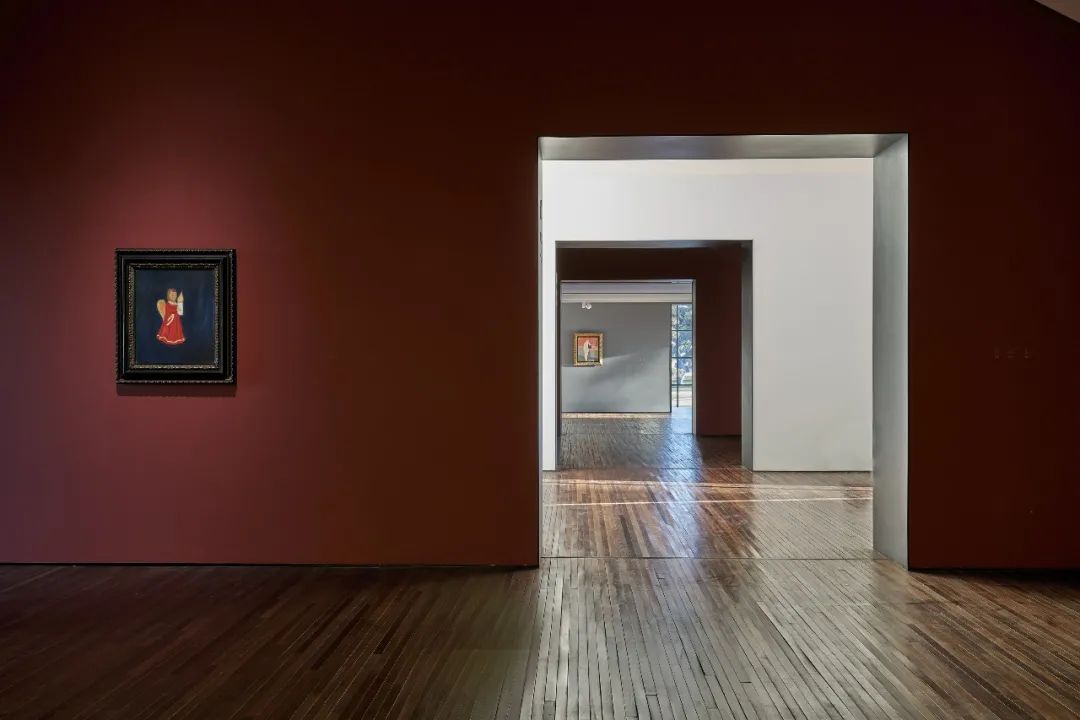
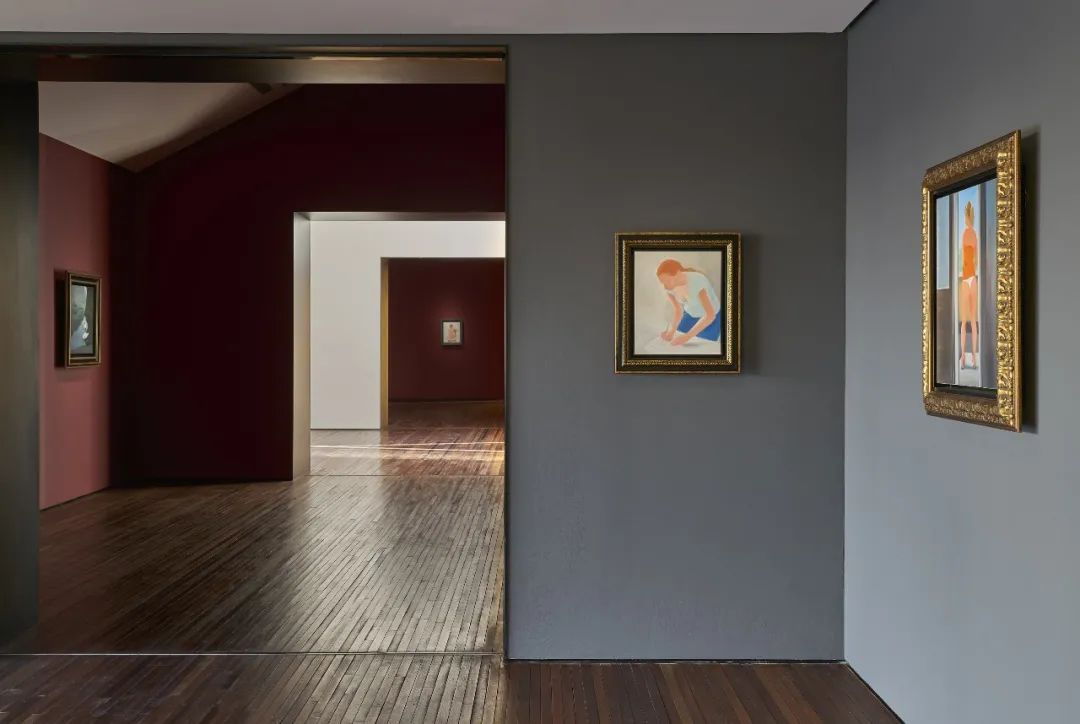
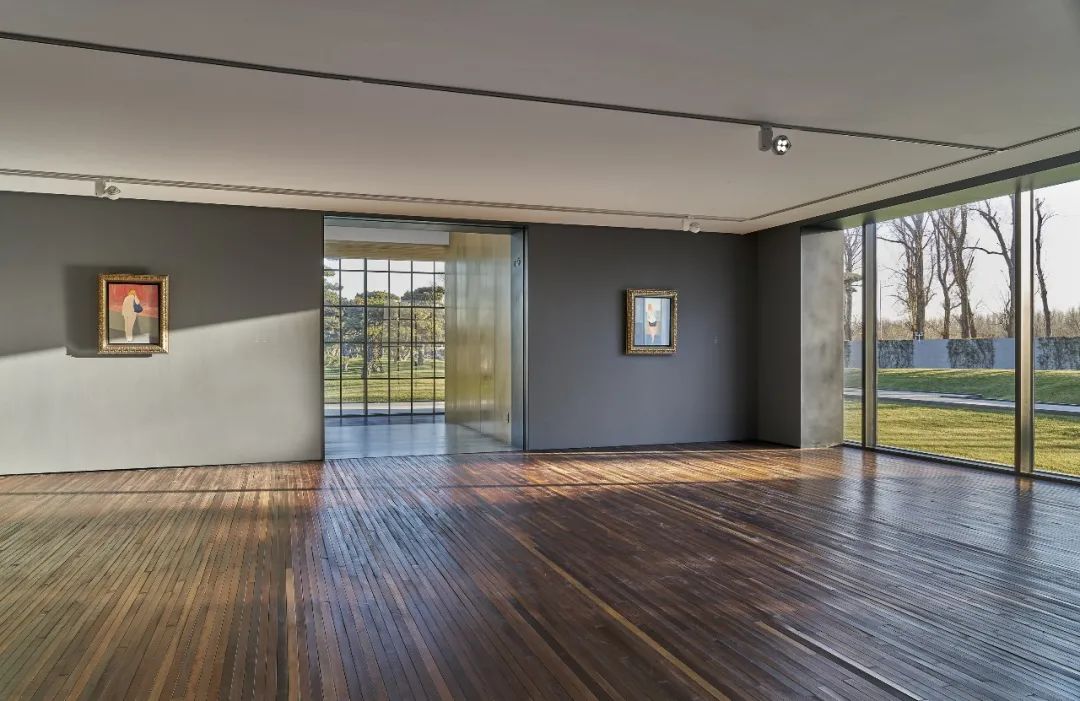
Exhibition View of “Prague—Wu Yi”, Song Art Museum, 2021
Image courtesy of the artist.
2022英文国际月刊改版上线,新鲜出炉!
👇
免费订阅请主页对话框留言“订阅”
CAFA ART INFO
英文版
Instagram全新上线!欢迎关注!
@artinfo_cafa
https://www.instagram.com/artinfo_cafa/
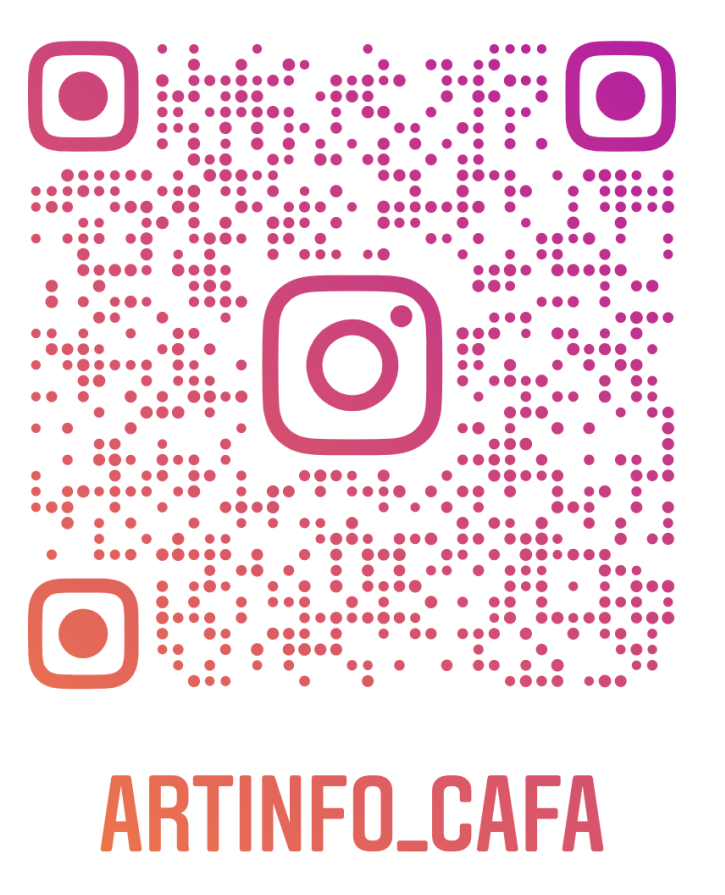
Facebook/Twitter
国际同步全部资讯
@CAFAartinfo
https://www.facebook.com/CAFAArtInfo
https://twitter.com/cafaartinfo
最新国际月刊已出
订阅请留言
版权声明:所有发表于“中央美术学院艺术资讯网CAFA ART INFO” 中英文版(http://www.cafa.com.cn) 及所属微信公众号“中央美院艺讯网”的内容均应受到国际版权条例的保护,未经授权不得擅自转载使用。
如需申请获得合作授权和内容转载许可,可后台留言“转载”,查看细则并留言联系,或邮件联系editor@cafa.edu.cn(中文)/artinfo@cafa.edu.cn (英文)。获得授权使用的转载,并注明“来源:中央美院艺讯网/CAFA ART INFO)。未经许可不得擅自转载或摘录编改文字和图片,违者本网将依法追究责任。
Copyright notice
© CAFA ART INFO, 2020. All Rights Reserved.
All of the information in the various pages of CAFA ART INFO web site and WeChat is issued by CAFA ART INFO (http://www.cafa.com.cn) for public distribution. It is protected under international conventions and under national laws on copyright. For application of cooperative authorization and reproduction permission, please contact editor@cafa.edu.cn(CN)/artinfo@cafa.edu.cn(EN). Any use of information in the web site or WeChat updates should be accompanied by an acknowledgement of CAFA ART INFO as the source, citing the uniform resource locator (URL) of the article. Unlawful copying and re-using parts of our copyright protected texts and images will result in legal action.

-
阅读原文
* 文章为作者独立观点,不代表数艺网立场转载须知
- 本文内容由数艺网收录采集自微信公众号中央美院艺讯网 ,并经数艺网进行了排版优化。转载此文章请在文章开头和结尾标注“作者”、“来源:数艺网” 并附上本页链接: 如您不希望被数艺网所收录,感觉到侵犯到了您的权益,请及时告知数艺网,我们表示诚挚的歉意,并及时处理或删除。

